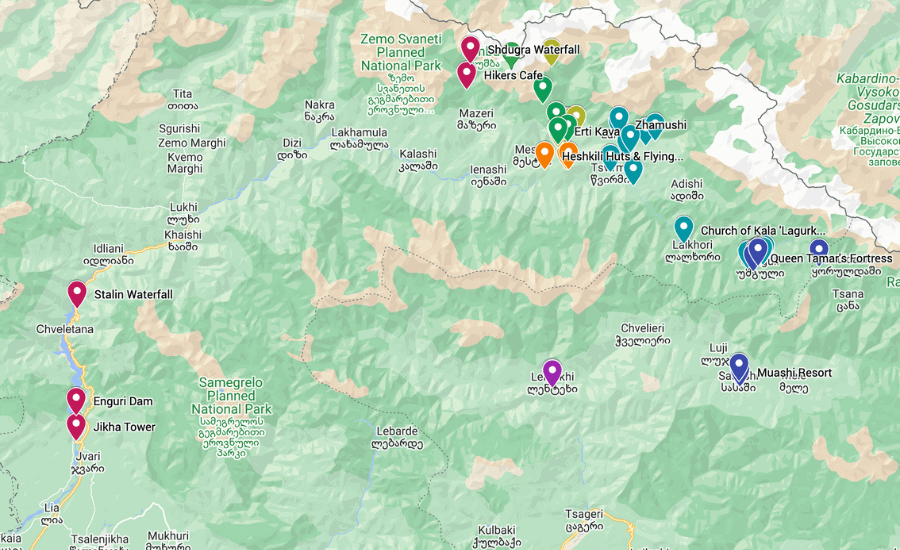The Ultimate Svaneti Itinerary for 3-7 Days of Travel
21 min readThe best things to do in Svaneti in 3-7 days, arranged into a sensible Svaneti travel itinerary.
Combining majestic landscapes, hiking and outdoor activities with top-notch museums, restaurants and cultural experiences, Svaneti Region is Georgia’s quintessential mountain region.
My first experience with Svaneti was back in 2017. Despite having lived in Georgia since 2020, it took me seven years to finally return to the region. I found Mestia and Ushguli virtually unrecognisable – there is certainly no standing in the way of progress, even in the high mountains. Svaneti is far from the most remote or adventurous mountain area, but my recent trip reminded me there’s a very good reason why it features at the top of most travellers’ Georgia wish-list.
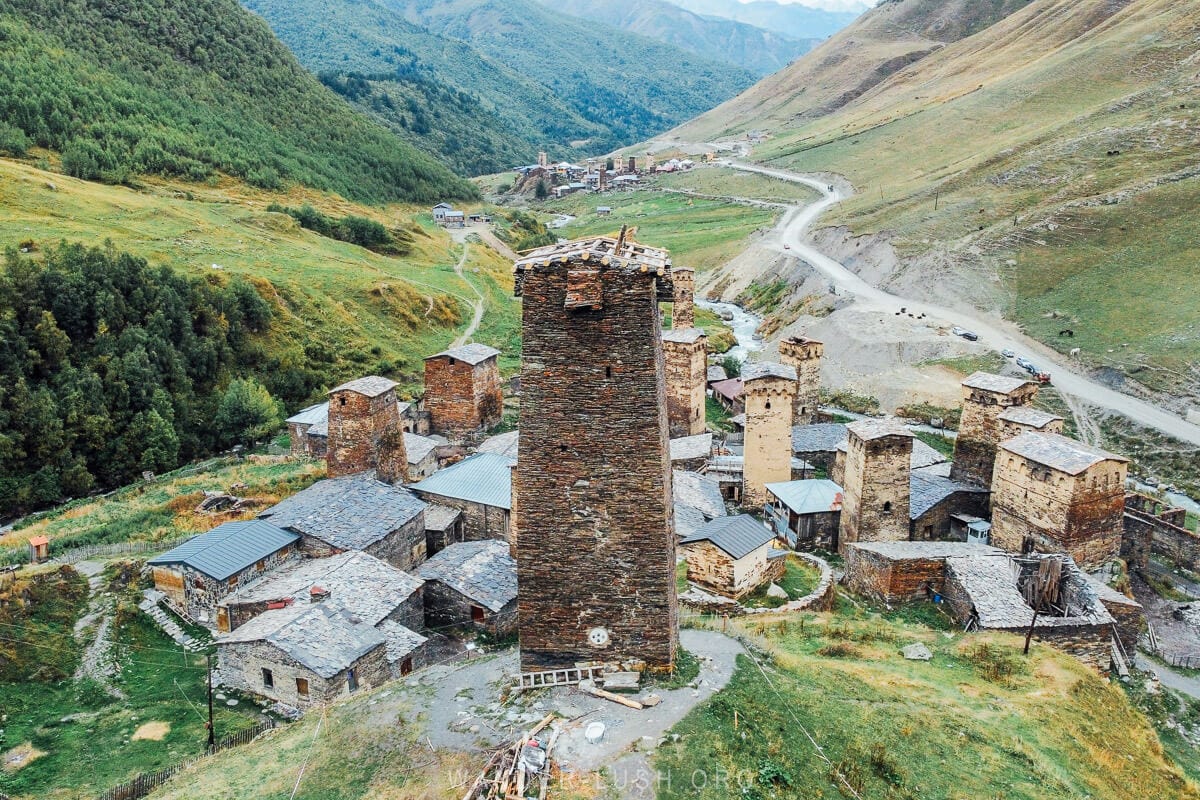
This Svaneti itinerary is designed for independent travellers, specifically for those looking to drive in Svaneti. It covers both Upper Svaneti and lesser-visited Lower Svaneti, and includes a good mix of day treks and non-hiking activities.
For practical travel advice, see my 21 Essential Things to Know Before You Visit Svaneti (published soon).
And for more ideas on what to do in Svaneti, see my dedicated Guide to Mestia and Guide to Ushguli (published soon).
Please note: This post contains affiliate links, meaning I may earn a commission if you make a purchase by clicking a link (at no extra cost to you). Learn more.
How to visit Svaneti – should you drive?
I have always cautioned against self-driving in Svaneti because of the state of the roads. Given the improvements made over the last 24 months – particularly in summer 2024 – I have now reversed my position. Svaneti is an excellent place to explore with your own vehicle.
My itinerary makes use of the newly concreted roads between Mestia and Ushguli and Ushguli and Lentekhi to make a clockwise loop route that starts and ends in Kutaisi or Zugdidi.
At the time of writing, 90% of the Mestia-Ushguli-Lentekhi-Kutaisi Road is now bitumen or concrete. The unfinished parts (currently under construction) are all compacted gravel. I did this trip in my RAV4, but you do not need a 4WD or any offroading skills.

Unfortunately, most car rental companies have not updated their terms yet and still prohibit people from driving on the Mestia-Ushguli-Lentekhi Road. I am working to get this policy changed with my preferred provider. In the meantime, I recommend hiring from the Martyna z Gruzji team (mention Wander-Lush to get 10% off your booking).
Bear in mind that the roads in Svaneti are still high mountain roads, narrow and windy in places. I don’t know if I will be updating my Georgia Road Trip Itinerary to include Svaneti, but I will certainly be recommending it as an add-on for confident drivers.
If you don’t want to drive yourself, consider hiring a driver for the duration of your stay. Feel free to email me for a recommendation.
You could adjust this itinerary to use a combination of public transport (marshrutka vans) and taxis – the 3 and 5-day itinerary alterations mentioned below would be most suitable.
Important updates about the roads in Svaneti
Zugdidi to Mestia
The main road into Svaneti is now the worst road in the region. Big chunks have fallen into the river valley and are being rebuilt/reinforced now. Because of this, the right-hand lane is closed in sections. Keep this in mind if you are driving in a clockwise loop as I suggest. The worst section is around Jvari.
Drive time: 5 hours minimum, longer if traffic is stopped for roadworks.
Mestia to Ushguli
As recently as last year, the only way to travel to UNESCO-listed Ushguli from Mestia was by hiring a 4WD taxi. Now Mestia-Ushguli is a nice concrete road with a few short, easy gravel sections.
Drive time: 90 minutes direct.
Ushguli to Lentekhi
Ushguli-Lentekhi is the latest section of road to be upgraded. It too is concrete with a few minor unfinished patches as you leave Ushguli, plus gravel sections on either side of the Zagari Pass and between villages Beniere and Mele. Work is ongoing and should be completed by the end of autumn 2024.
Drive time: 2 hours direct.
Lentekhi to Kutaisi
The Lentekhi-Kutaisi section is a regular sealed road. There are several landslide sections being repaired now, but again, the gravel parts are compacted and manageable.
Drive time: 2 hours direct.
There is no public transport between Ushguli and Kutaisi – yet. In 2025, the Zugdidi-Mestia Road is set to temporarily close for extensive repairs, so I assume marshrutka vans will be rerouted starting from spring. I will return to update this as more information becomes available. For now, you can use this guide on how to get to Mestia and Ushguli using public transport.
Best time of year for Svaneti
Mestia is a year-round destination, but for a road trip, I only recommend travelling in the summer and autumn months, between the start of July and the middle of October. Heavy rain and landslides are common in spring, while in winter, some roads might be closed altogether.
My tried-and-tested Svaneti itinerary
This is the exact route we took this summer.
- Day 1: Kutaisi/Zugdidi to Mazeri & Shdugra Waterfall – overnight in Mazeri
- Day 2: Mestia, Heshkili & Hatsvali Ski Resort – overnight in Mestia
- Day 3: Mestia & Chalaadi Glacier – overnight in Mestia
- Day 4: Mestia & Koruldi Lakes – overnight in Mestia
- Day 5: Mestia to Ushguli – overnight in Ushguli
- Day 6: Ushguli to Sasashi (Lower Svaneti) – overnight in Sasash
- Day 7: Sasashi to Kutaisi via Lentekhi – overnight in Kutaisi
With 3 days in Svaneti: Travel directly to Mestia; spend your first afternoon and night in Mestia (see Days 3-4 below); take a day trip to Ushguli (see Day 5 below); return via the Mestia-Zugdidi road.
With 5 days in Svaneti: Cut one day from Mestia; travel directly down from Ushguli without stopping off in Lower Svaneti.
Day 1: Kutaisi/Zugdidi to Mazeri & Shdugra Waterfall
Most travellers who approach Svaneti via the Zugdidi-Mestia Road (which was until very recently the only route into the region) head directly to Mestia. But I highly recommend stopping 20 kilometres short to spend your first night in the village of Mazeri.
Part of the Becho community, Mazeri is the highest of 13 villages in the Dolra Valley. It sits deep in the gorge, directly at the foot of Mount Ushba, with a truly phenomenal outlook over Georgia’s fifth-highest peak. Mazeri has a nice range of guesthouses and a few trekking routes. It is much quieter than Mestia, which makes it the ideal spot to ease into Svaneti.
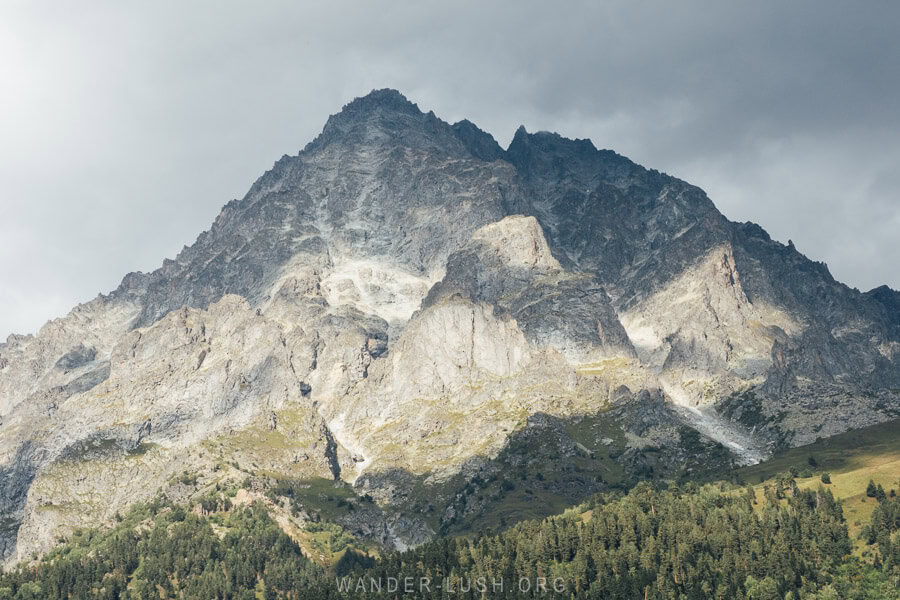
Where to stop on the way to Mazeri
If you are coming from Kutaisi, Tbilisi or anywhere in the east, the adventure begins before you even reach the mountains. Choose from one of two routes to Mazeri via Zugdidi (240 km; 5.5 hours from Kutaisi) or via inner Samegrelo (200 km; 5.5 hours from Kutaisi).
The more popular and efficient route via Samegrelo’s biggest city, Zugdidi, follows the major roads to the Zugdidi-Mestia Highway. An alternative ‘backroad’ goes through Martvili (home of Martvili Canyon and a dozen other gorges and waterfalls), Salkhino (for Levan Dadiani’s Castle and Royal Dadiani Winery), and Tsalenjikha (for old tea factories and the Transfiguration Temple) before joining the highway at Jvari.
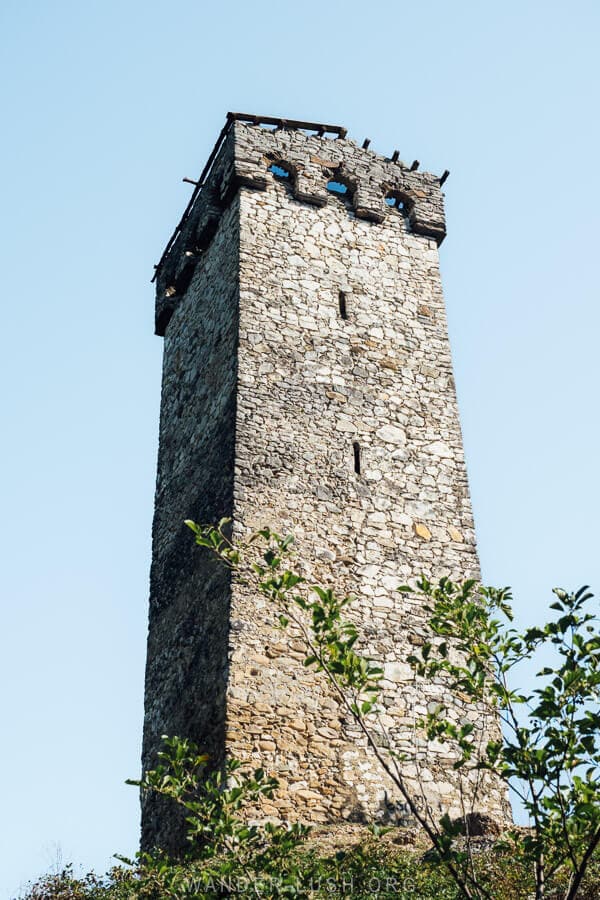
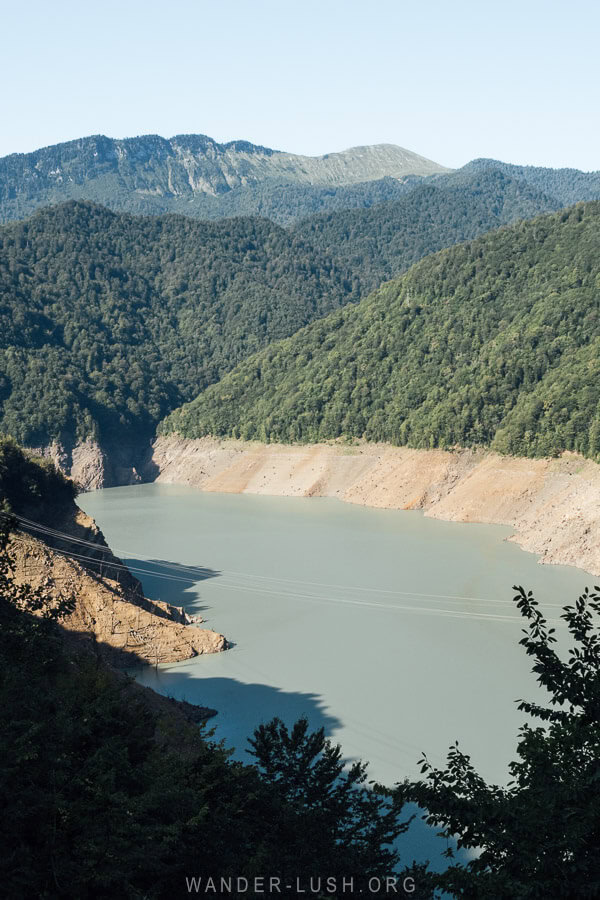
The Jikha Tower in Jvari (above left) is the first koshki (defensive tower-dwelling) that you encounter in Svaneti. New tourism infrastructure at Enguri Dam (above right) means you now need a ticket to see the world’s second highest concrete arch dam up close – there are several tour programs to choose from. Delpak Waterfall and the sinister Stalin Waterfall are both located off the highway and also worth a look-in.
Afternoon in Mazeri
Whichever route you choose, try to arrive in Mazeri with enough daylight for the Shdugra Waterfall Hike. The trailhead begins where the sealed road ends (see the exact location here), and the 8-kilometre hike requires a minimum of 5 hours return. More details on the hike here.
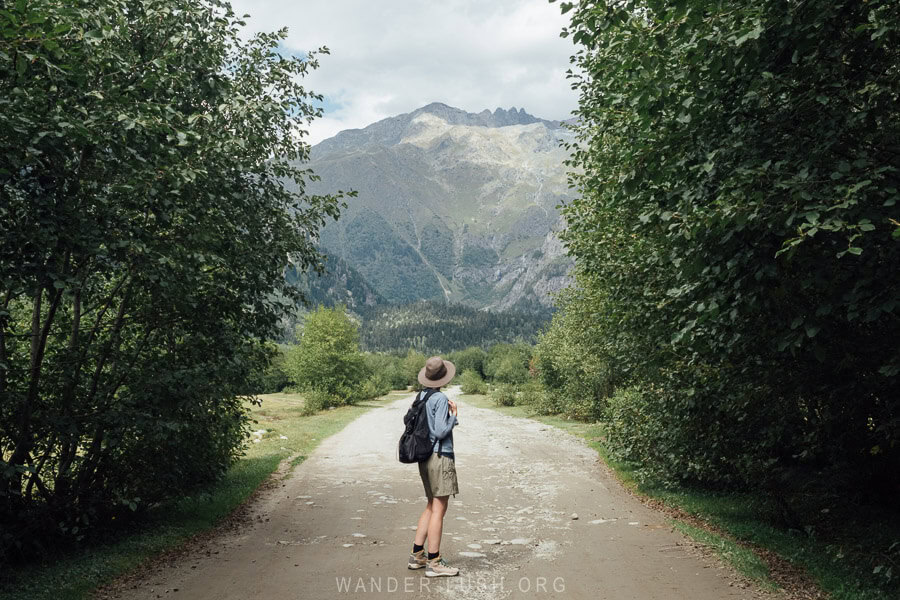
If you’re happy with a short walk, you can go part of the way along the same track to the Hikers Inn (2 hours return). The whole route is flat, with beautiful views of Ushba. If you have a 4WD, you could drive to the cafe via the uneven dirt road – but I do recommend walking. We are not huge hikers (and who doesn’t love a trek that ends at a restaurant…), so this is what we opted for.
The food at the Hikers Cafe is surprisingly good – particularly the specialty dish of fresh-caught trout baked in dough with Svan salt. Prices are fair (payment by cash or card), and the cafe has some cool design elements plus an artificial lake.
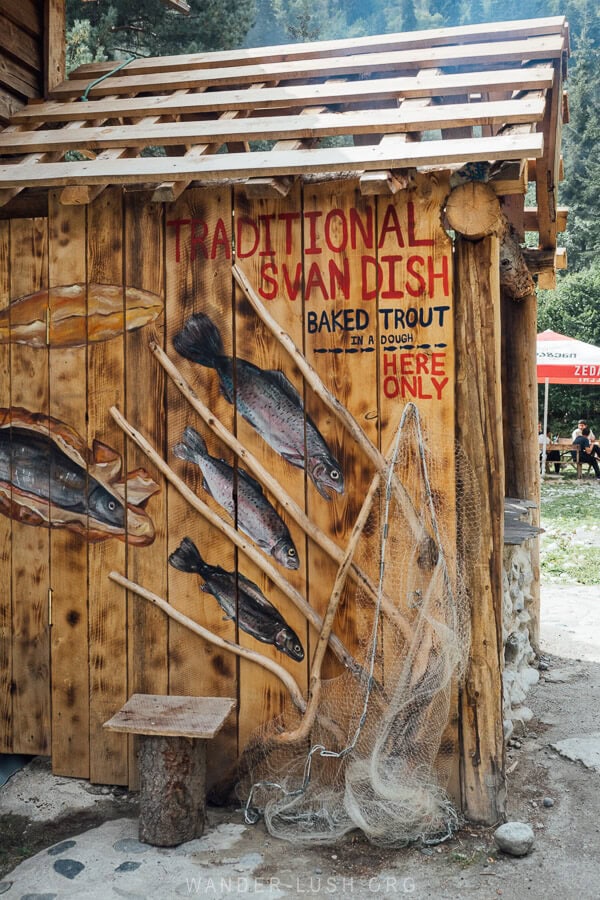
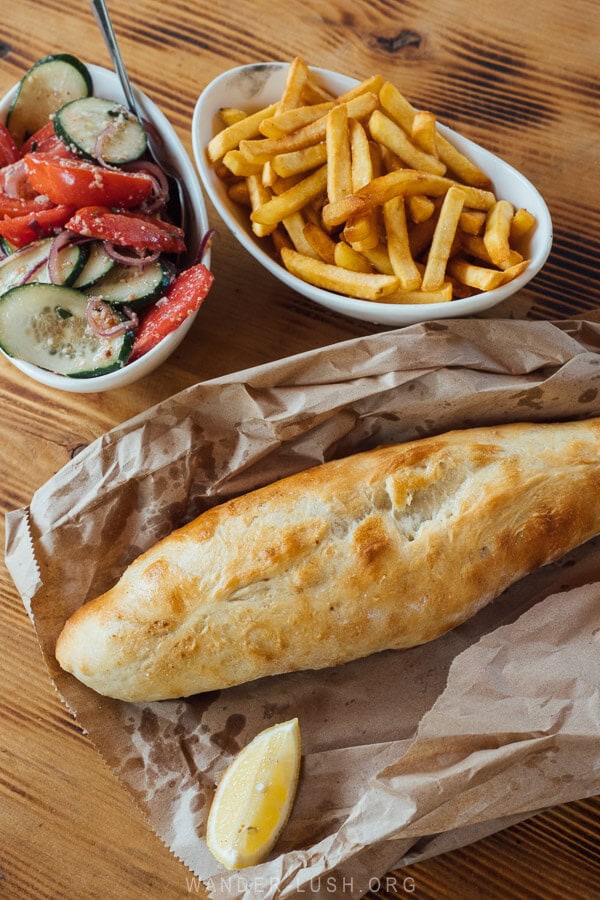
Food options back in Mazeri are quite limited, so I recommend pre-organising dinner at your guesthouse. Our accommodation didn’t offer meals so we ended up having a post-hike snack at Elie’s Cafe. It was fine, but nothing special.
Where to stay in Mazeri
We loved our little cabin at the family-owned Cottages Shikhra. If you plan to do the hike, it is conveniently located right before the trailhead. Rooms are clean, comfortable and warm, with ensuite bathrooms and free onsite parking.
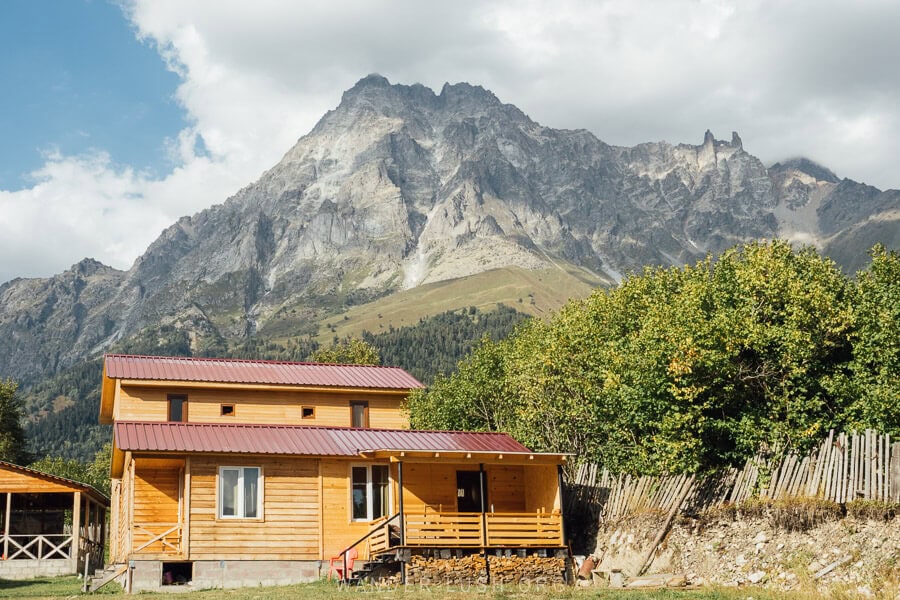
Another popular option is Peak Mazeri Guest House, located right next door.
Day 2: Mestia, Heshkili & Hatsvali Ski Resort
Wake up early to complete the final 30 minutes of the drive to Mestia. Erti Kava Specialty Coffee is one of the few places in town that serves a full breakfast, so I recommend heading there first thing.


Ushba Street & Lanchvali
If you want to start your time in Mestia with some iconic views, head to the elevated Ushba Street that overlooks a neighbourhood with a concentration of towers. We ended up returning to this street several times throughout our stay to take photos at different times of the day.
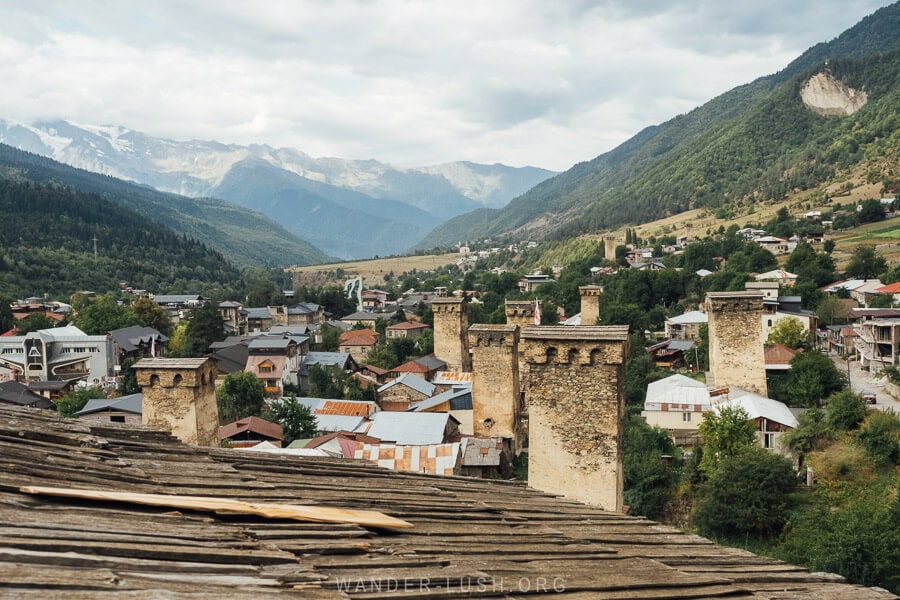
For a panoramic view, climb the nearby Niguriani Tower (6 GEL) or Khergiani Tower (3 GEL), poking your head out onto the roof after ascending four levels of rickety ladders. We visited both towers and preferred the former – the view is better, and the hostess is very friendly and will show you around her small museum (below left).
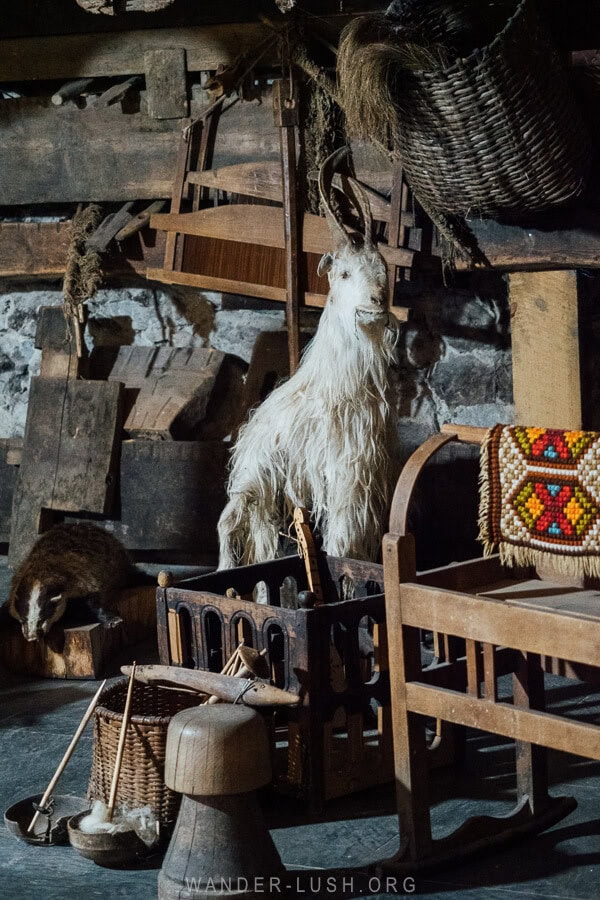
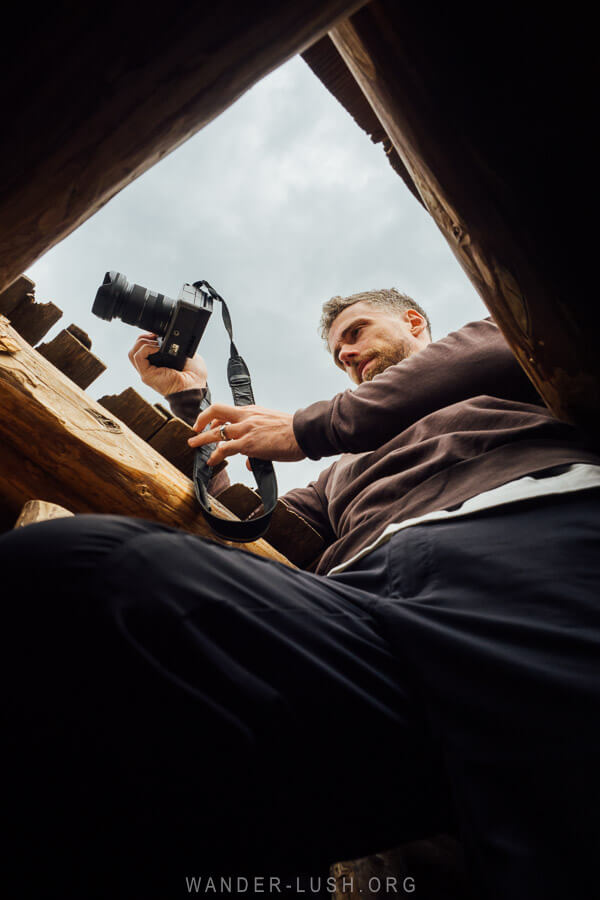
The street up to the Lanchvali Archangel Church and another tower-museum, Margiani’s House Museum, is very steep and tight, so I recommend leaving your car and continuing on foot. We found the church locked, but it was still a very pleasant walk.
Laghami Old Quarter
A little further east along the Mestiachala River, Laghami is the oldest part of Mestia and another neighbourhood that is ideal for a morning stroll. The 10th-century Laghami Church is an absolute must-see in Svaneti. We called the number on the gate and got in touch with the caretaker, Rezo, who kindly came down with the key. His family has cared for the church for generations, and he himself is part of a team restoring the 13th-century frescoes.
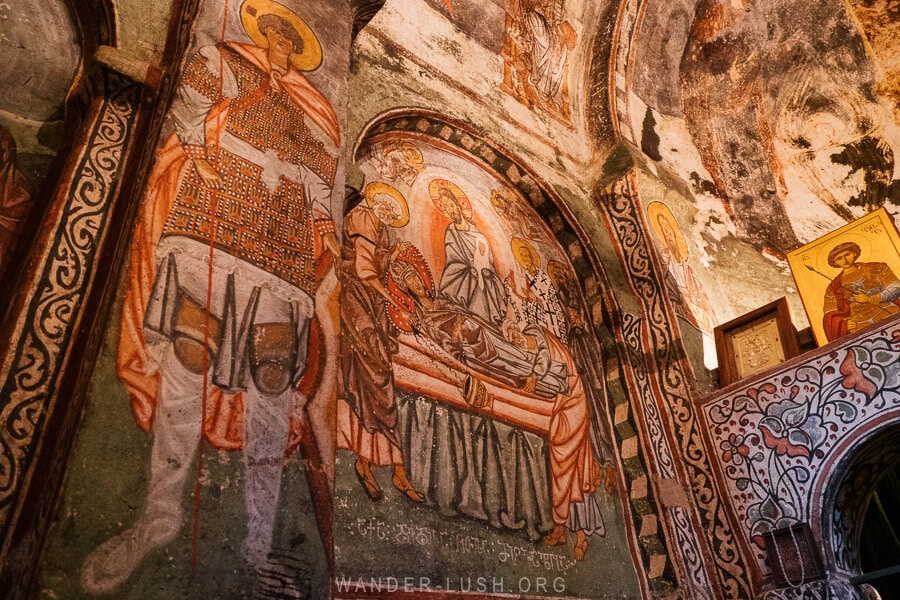
The nearby Mikheil Khergiani House Museum is also worth a visit for the exhibition of retro Soviet medals and maps, plus a recreation of the alpinist’s bedroom. You can also climb the tower here.
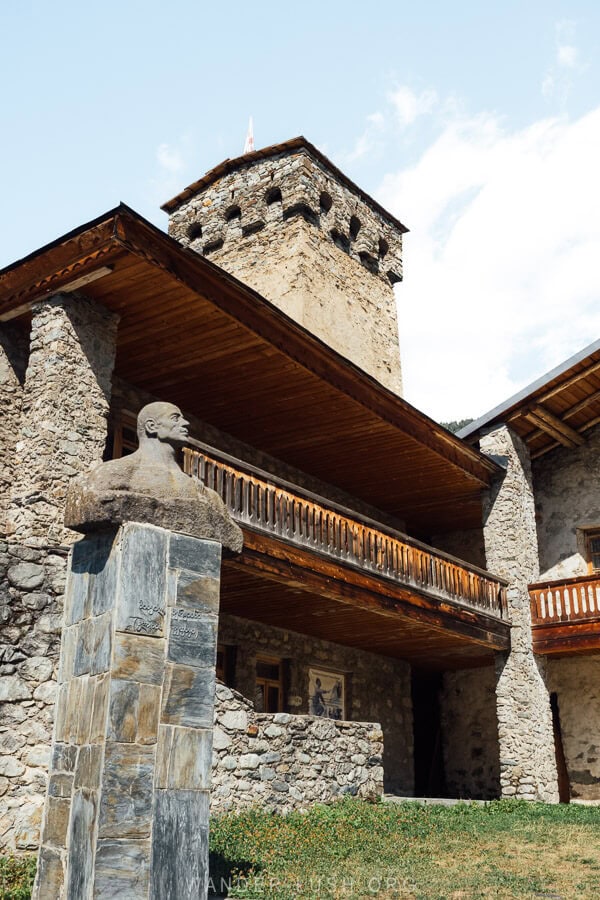
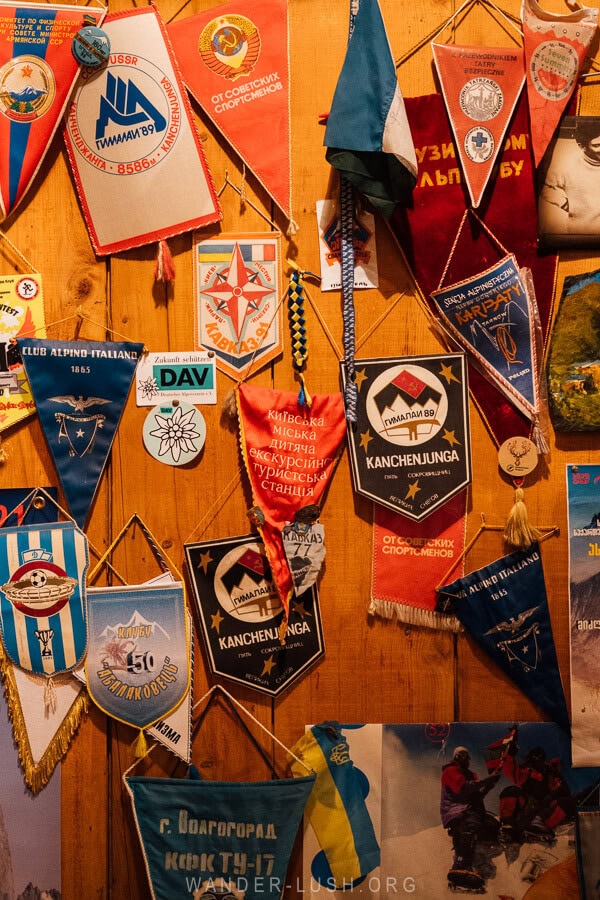
Heshkili & Hatsvali
In the afternoon, ride the cable car into the hills south of the centre. Heshkili Huts and the Insta-famous flying swing are an easy 15-minute drive from Mestia via a smooth concrete road. We took a few photos at the swing, but decided to skip the cafe after hearing mixed reviews.
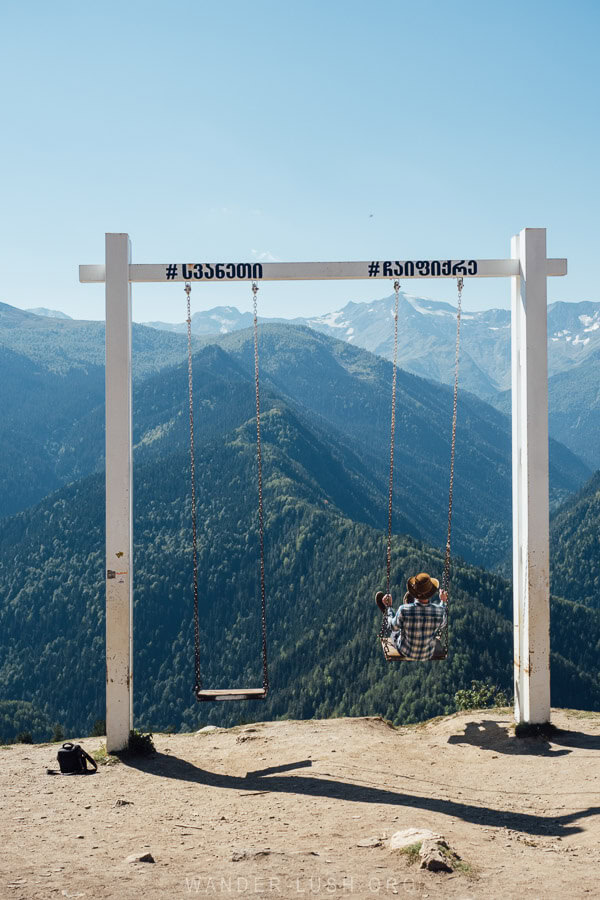
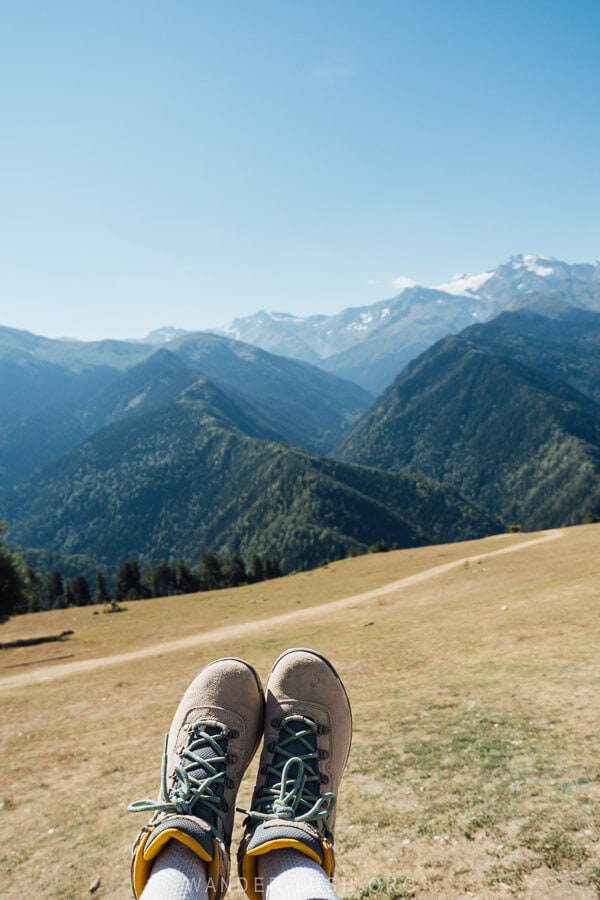
The Mestia cable car was erected in 2017 to service the Hatsvali Ski Resort. It runs during the summer (between mid-June and end of September) as well.
There are a few ways to approach the cable car. From Heshkili, we decided to drive part-way back down the mountain to the Hatsvali Ski Lift, the middle of three stations. We then took the enclosed gondola up to the top station at Hatsvali, then rode the open chairlift down to the bottom station and back to the middle to collect our car. Tickets cost 25 GEL and are good for a return trip on both lines.
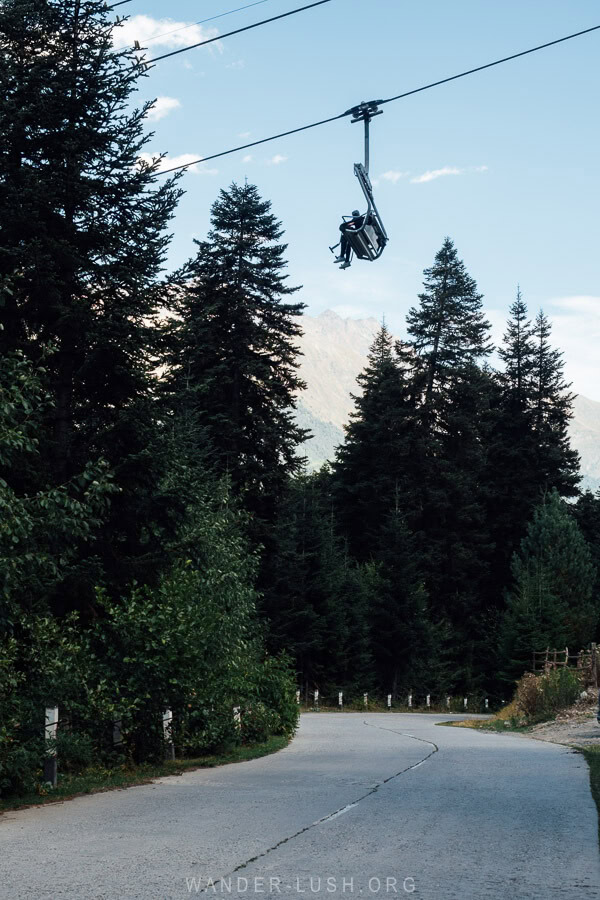
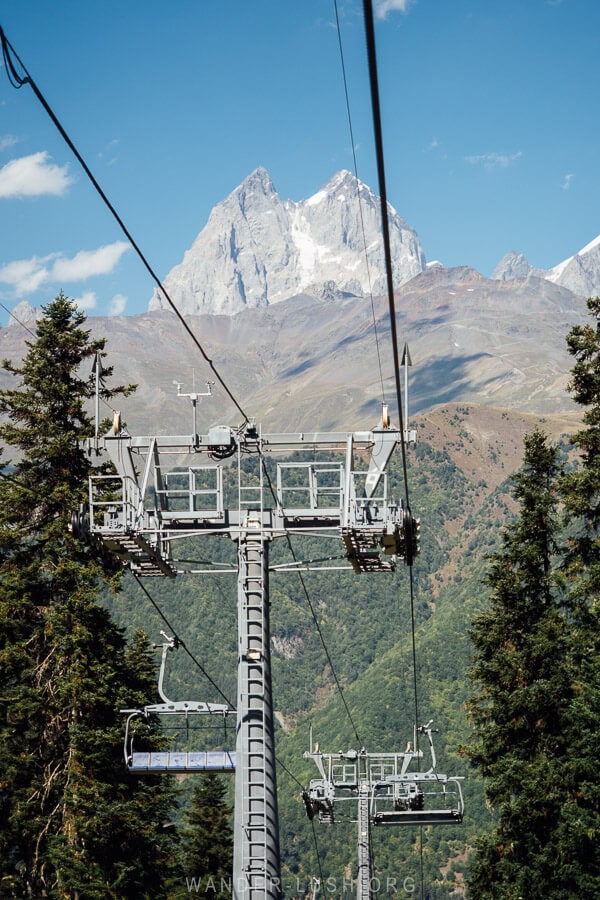
At the top lift station, there is a big cafe called Zuruldi. We walked a short way to this viewpoint. If you have more time, you could walk further east along the Zuruldi Ridge to the Mentashi Transmitter Viewpoint, where the mountain views open up more. The lifts stop running at 5pm, so make sure you give yourself enough time – otherwise you will have to walk back down to town via the road (around 3 hours on foot).
Finish with dinner at Cafe Laila or Lushnu Qor ahead of a screening of the famous Ushguli-made film, Dede, at Pub & Cinema Dede.
Where to stay in Mestia
We spent our first two nights in Mestia at Family Hotel Kala. Rooms here are simple but very comfy, the buffet breakfast is good, and we found the staff very helpful. The location on the edge of Mestia is convenient if you are driving. Onsite parking is available.
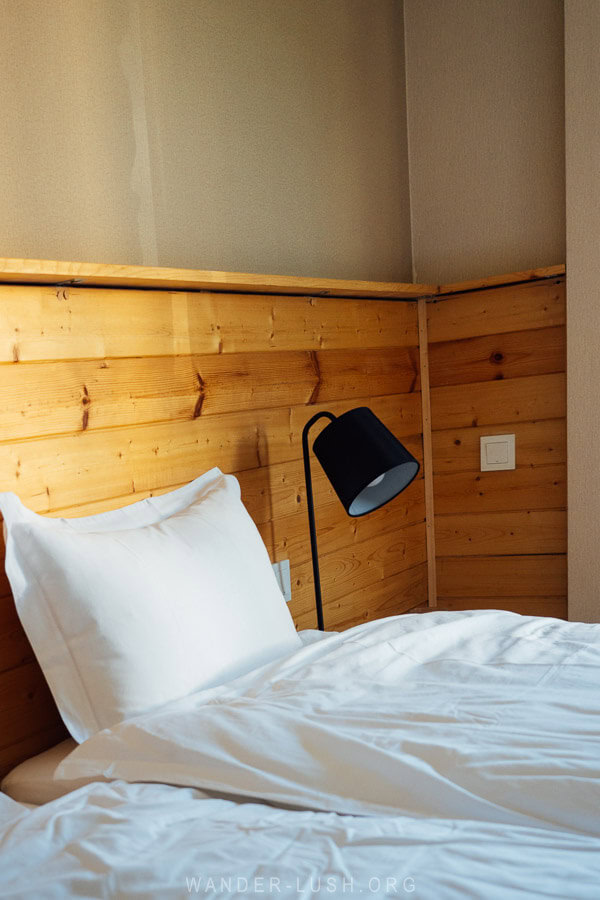
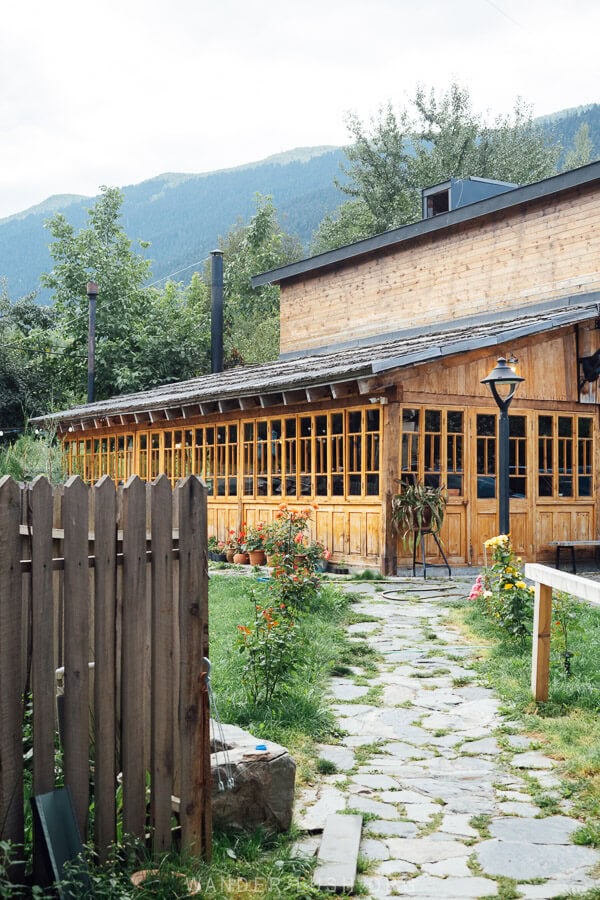
After extending our stay in Mestia, we moved to Hotel Lahili (pictured above) near the bottom cable car station. It is definitely more on the boutique side, with a lovely design and great amenities including a nice buffet breakfast and onsite bar. Parking is limited, so I recommend arriving in the middle of the day to snag a spot. We will likely stay here again when we revisit Mestia next winter.
Day 3: Mestia & Chalaadi Glacier
Grab a coffee from Coffee Kor in the centre of Mestia and sit on the terrace to watch Mestia waking up.
Chalaadi Glacier Hike
The hike to Chalaadi Glacier is the best day hike in Mestia in my opinion. In many ways it is my idea of the perfect hike: it’s mostly flat, shady until the final stretch, and with just enough scramble to keep you interested. We completed the 2.6-kilometre hike in 2.5 hours (round-trip).
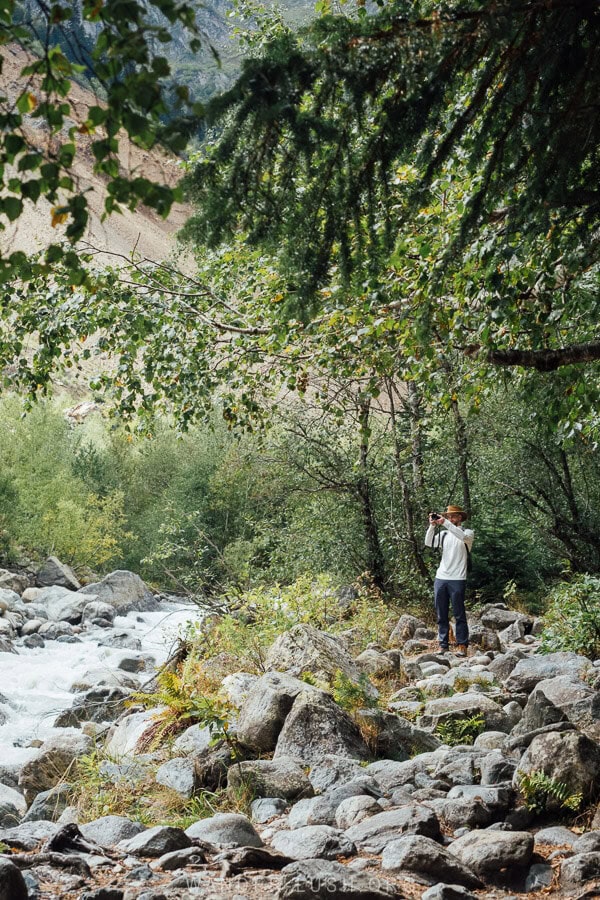
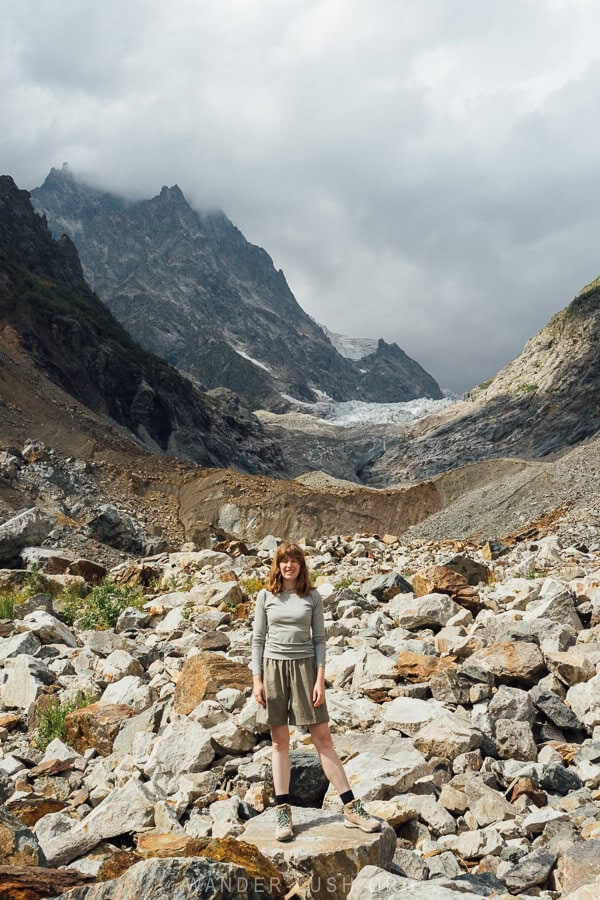
The trailhead starts at the Mestia Chali Bridge. To get there from town, you must drive past Mestia Airport. We timed it so that we could watch one of the prop planes landing. Check the timetable on Vanilla Sky, and add about an hour to the departure time if you want to see the Natakhtari flight.
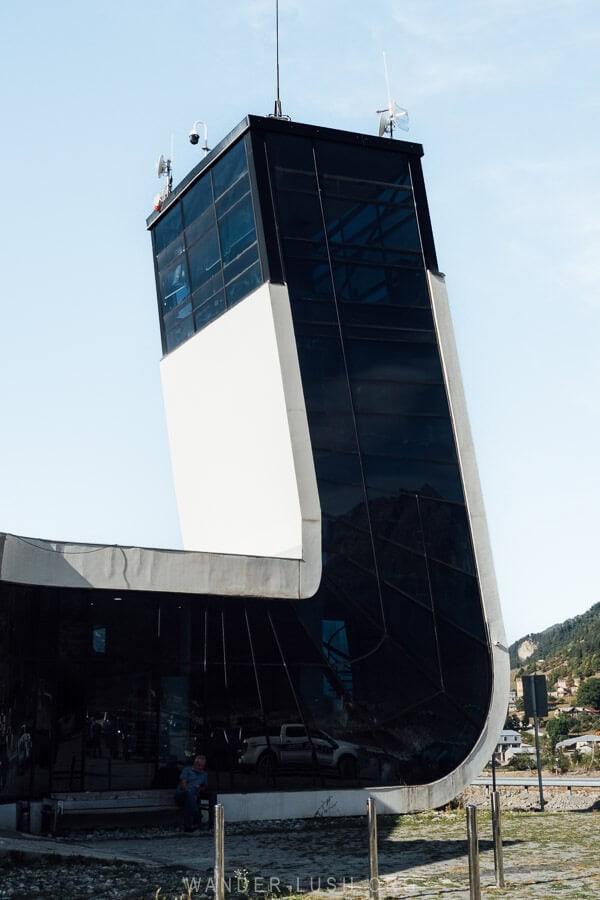
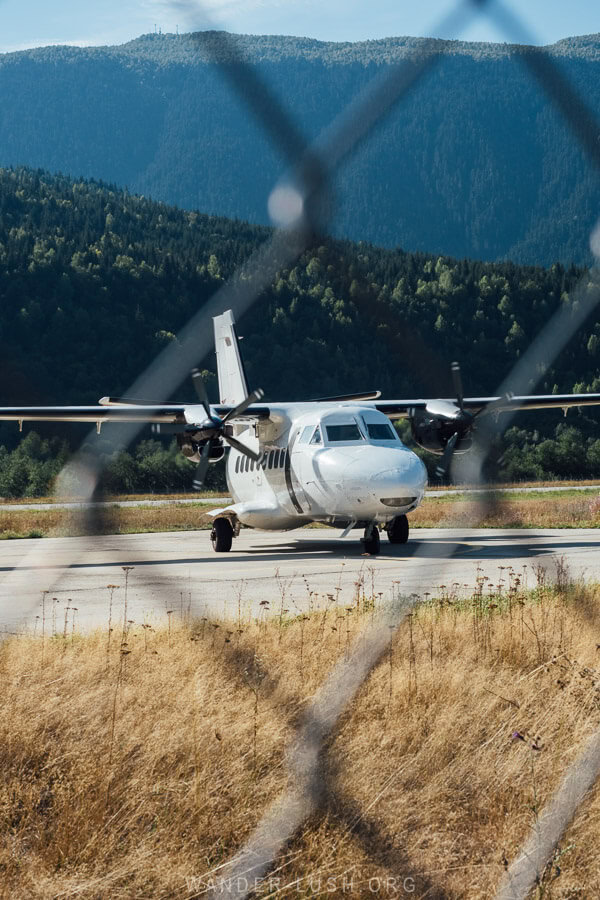
For the Chalaadi hike: Once you leave the paved road, you need to drive another 20 minutes over an unsealed road to reach the parking area and small hydro dam. Cross the rickety bridge (very carefully!), then follow the forested path to the right past Khevi Cafe. The trail starts off with an ascent, but quickly levels out when you reach the river.
The glacier comes into view towards the end of the hike, with the final stretch over loose rocks and rubble. Seeing the ice wall up close is quite something – but please only go as far as the rock with ‘STOP’ painted on it. We saw a man almost get taken out by rocks falling from the top of the glacier.
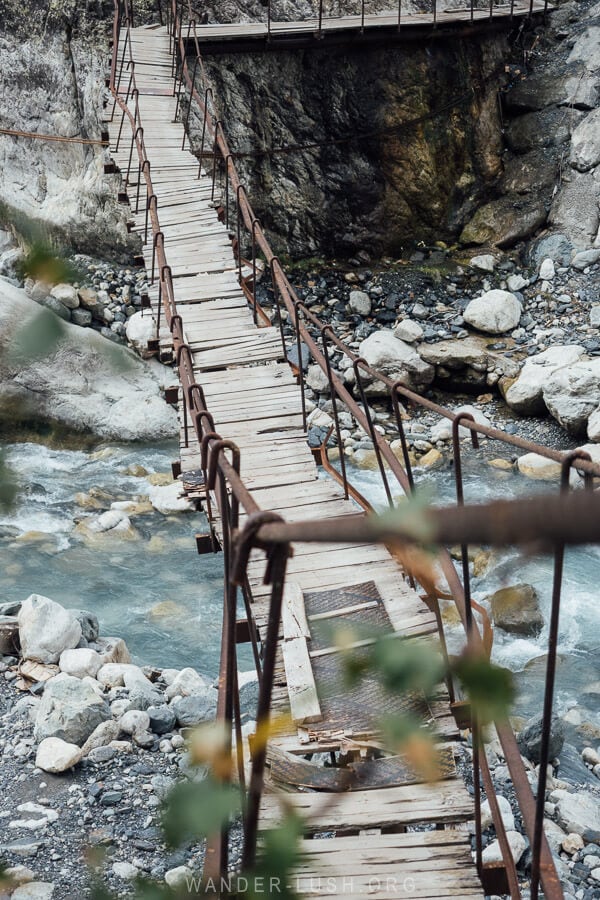
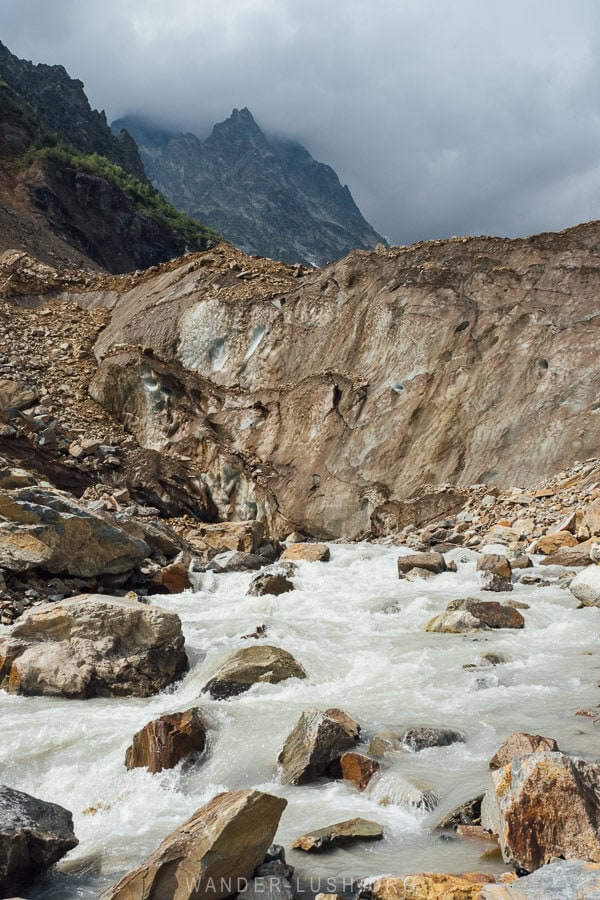
Mestia museum
Grab lunch back in Mestia (for something a bit different, Dissident has interesting soups and salads and a nice riverside location near the museum) before touring the Svaneti Museum of History and Ethnography. This is the premier institution in the region and one of the best museums in Georgia. The showcases on Svan culture are very interesting, but I particularly like the icons and religious objects collected from village churches. Give yourself at least 2 hours for the full exhibition.
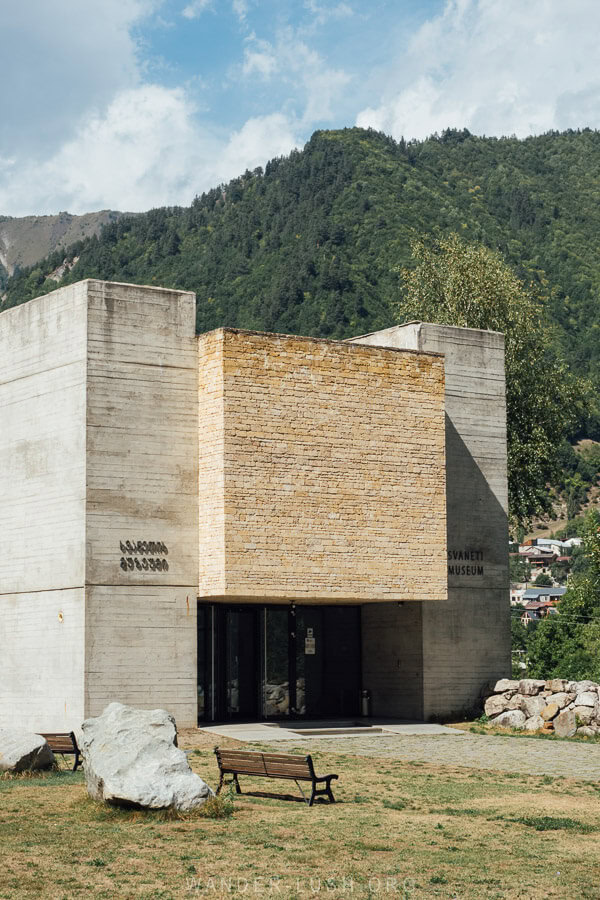
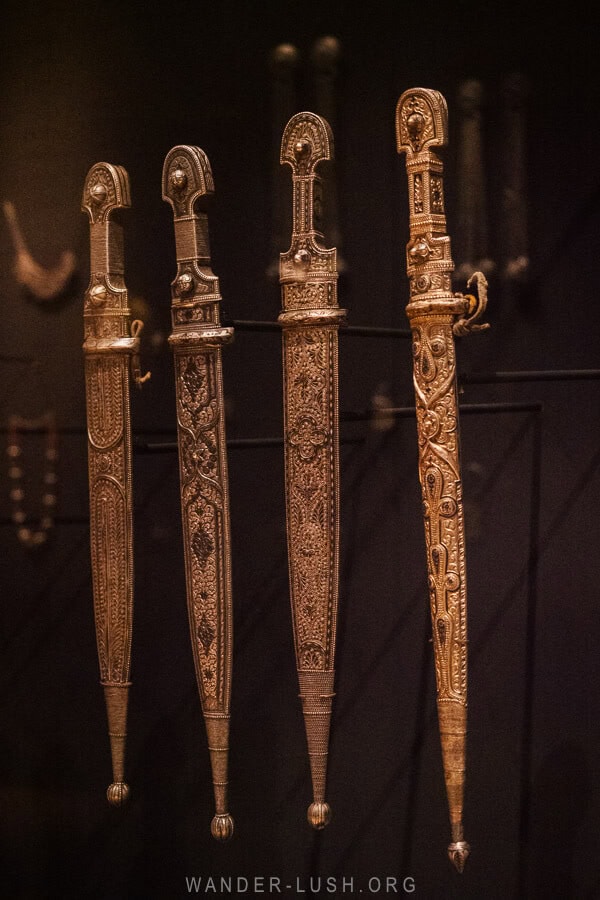
Finish with a dinner of Svaneti-style tacos at Twin Peaks and a nightcap at the cool KRK Bar.
Day 4: Mestia & Koruldi Lakes
The Cross Over Mestia & Koruldi Lakes
Koruldi Lakes is another popular day hike from Mestia. Having recently hiked to the Abudelauri Lakes in Khevsureti, our expectations were pretty high. You do not do this hike for the lakes themselves – they are tiny, especially at the end of summer – but rather the highlight is the mountain vistas.
The Koruldi Lakes hike is much more advanced than the Chalaadi Glacier hike. It involves a 1,400-metre ascent and takes 7 hours at a minimum. Find a full route guide here on Caucasus Trekking. We opted to go by car instead.
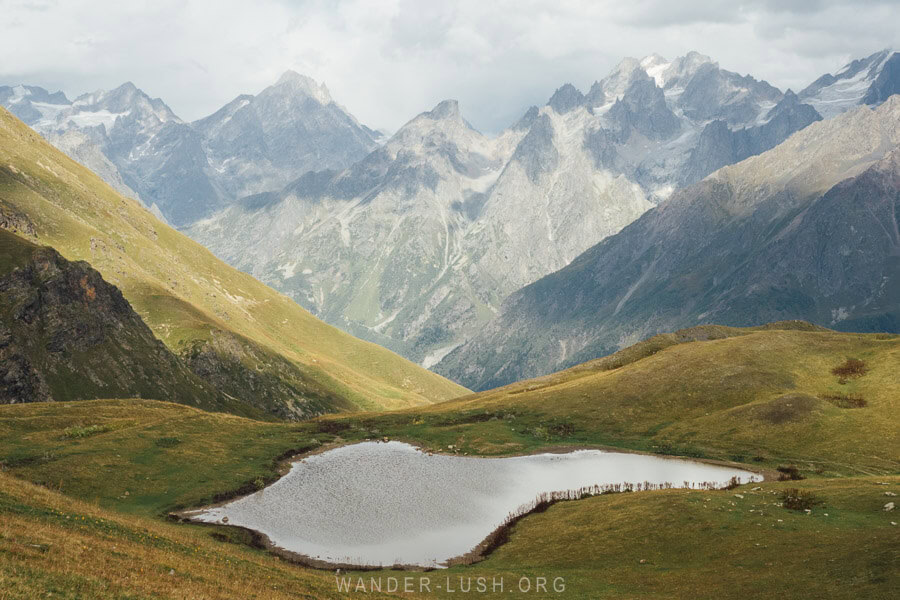
The ‘road’ to Koruldi is a very rough off-road track. We didn’t dare attempt it in our RAV4 – instead, we hired a local Delica driver, Zaza. He is a very skilled driver and patient guide. If you would like his contact details, please send me an email.
This season’s rate for a transfer to and from Koruldi is 250 GEL per car or 50 GEL per person if you carpool. The trip took us 3 hours in total, including lots of photo stops and ample time up at the lakes and on a plateau overlooking Ushba (a little bonus stop that Zaza included for us).
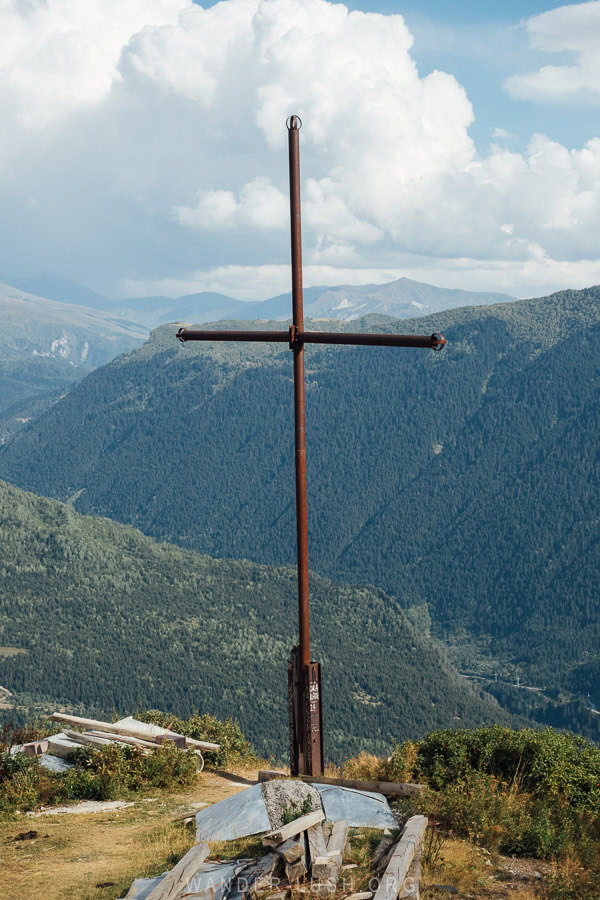
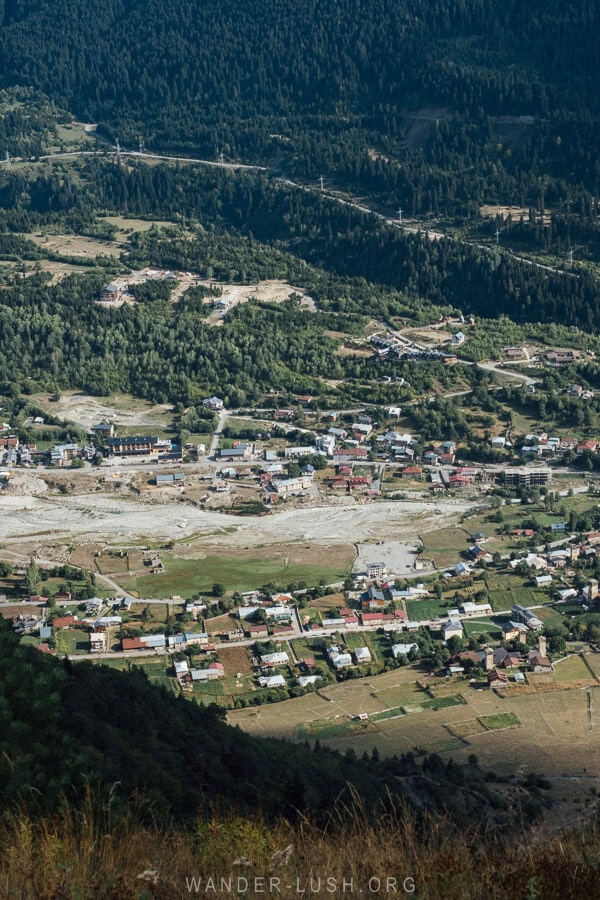
The road passes right by the Cross Over Mestia viewpoint (pictured above). The path through the forest to the cross is the steepest (and according to a friend of mine, the most unpleasant) part of the Koruldi trek. Thus an alternative option is to take a car as far as the cross, bypassing the most difficult section of the hike, then continue to the lakes on foot from there.
Enjoy an easy afternoon in Mestia, perhaps dropping into Hotel Gistola for a sauna and/or drink at the rooftop bar, ahead of dinner at the wonderful BBQ Garden.
Day 5: Mestia to Ushguli
It takes just 90 minutes to reach Ushguli from Mestia via the newly concreted road. But why rush it? We dedicated a whole morning to this drive, stopping at half a dozen different villages and points of interest along the way. In the end, it took us 5 hours.
Where to stop on the road from Mestia to Ushguli
If you’re not doing the Mestia to Ushguli Hike, driving yourself between the two towns is a great opportunity to take in some of the scenery you would see on the trek. There are new roads into some of the valleys as well, which makes it easy to visit the hamlets either side of the Mulkhra River.
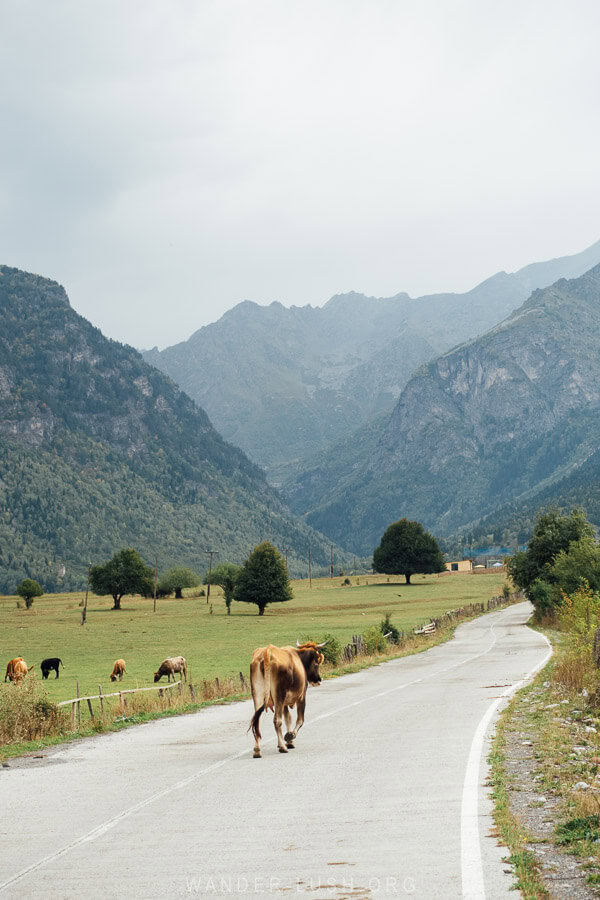

We started with Zhamushi on the northern side of the river. This road has not been renewed (yet), but it is not too steep or rough. The village was very quiet when we arrived in the early morning – we didn’t see a single soul amongst the broken towers. We peeked through a locked gate to glimpse the stone Church of the Saviour, which appears to be located on private property.
We pondered continuing to the upper village of Lakhiri, but given the condition of the road, settled with a view of its towers from the bottom of the hill instead.
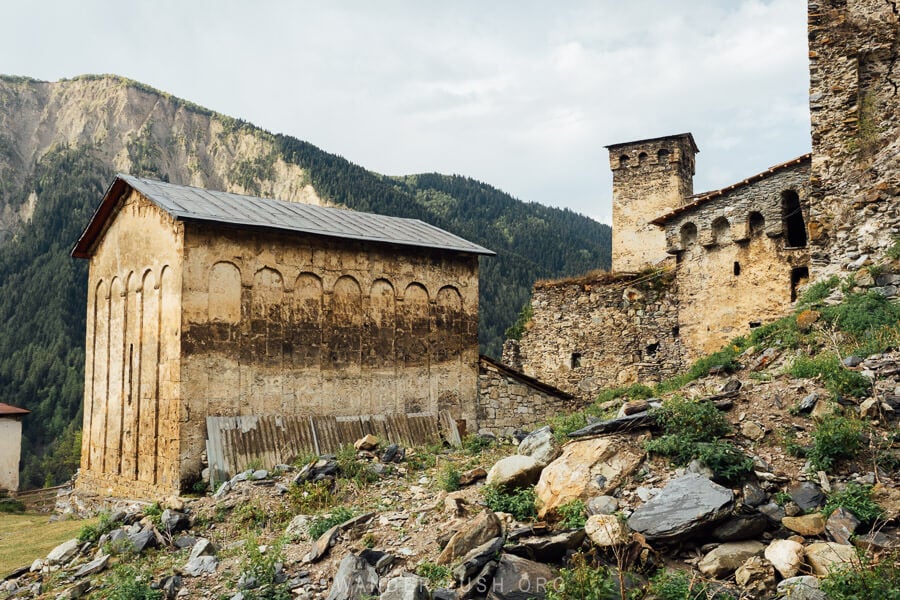
Zhabeshi is the village where hikers stay on the first night of the Mestia-Ushguli Trek. It has a new concrete road that follows the river (starting just outside Zhamushi at this point) – do not follow Google Maps, as it will route you over the old, damaged road. Zhabeshi has an alpine feel, with rolling green hills and little cottages. It is interesting to see which villages have benefitted from being on the popular hiking trail and which have not. Zhabeshi has new roads, a new bridge, and a whole lot of renovation work and construction going on.
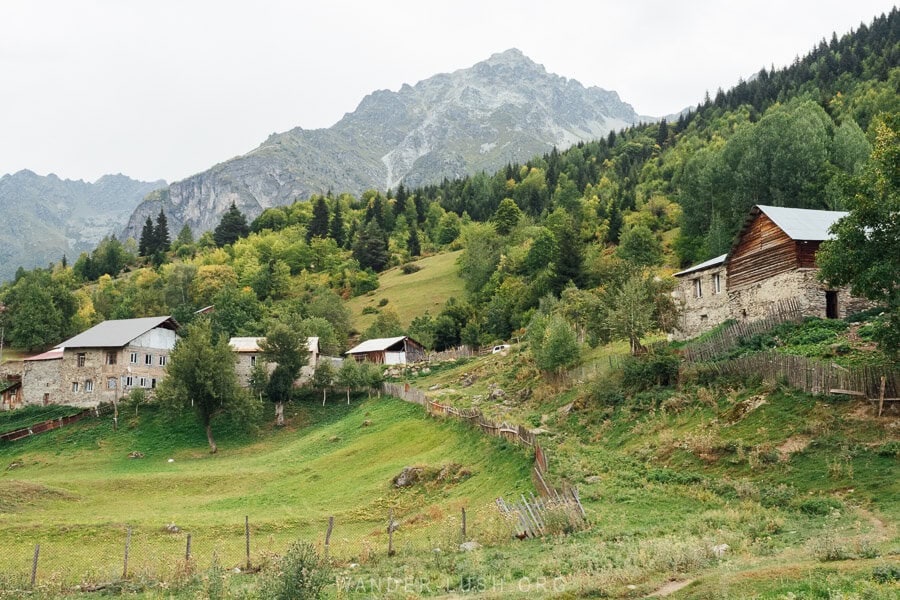
At the head of the same valley, Chvabiani is a charming village with a few Svan towers, narrow cobbled lanes, and houses sporting ornate wooden balconies.
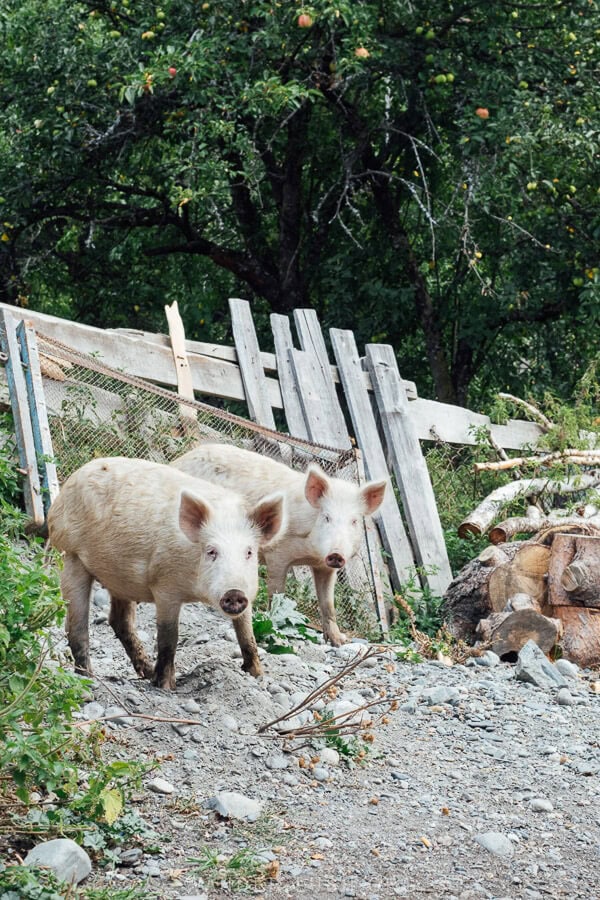
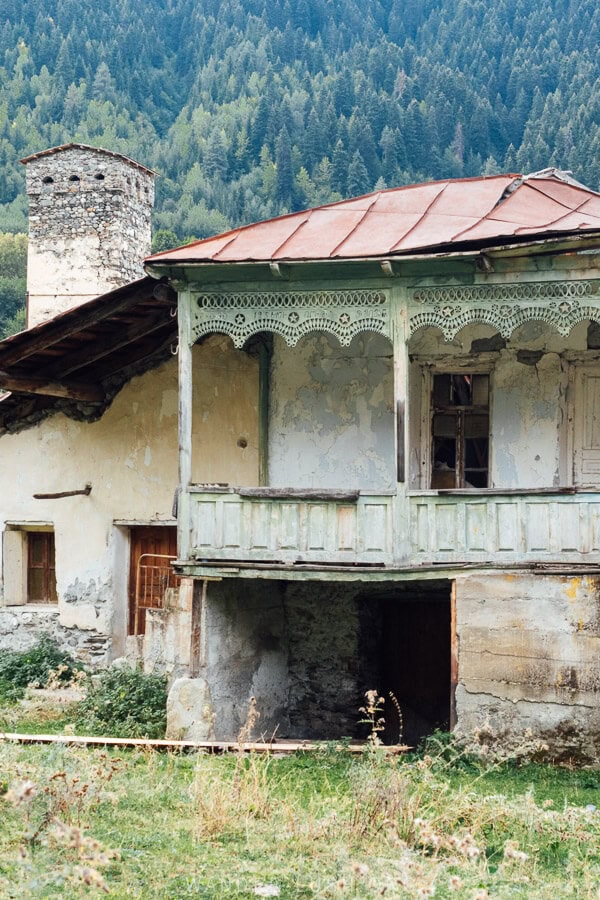
Leaving Zhabeshi and Chvabiani, the ascent to the Ughviri Pass begins and the road gets visibly steeper. Just before the pass, there is a small roadside ethnographic museum called Svan Old House. I was a bit concerned it might be a tourist trap, but I’m really glad we decided to stop here.
The objects inside are pretty standard, but unlike the tower museums in Mestia, the space is flooded with natural light, which makes photography a lot easier. Entrance costs 2 GEL (plus another 1 GEL if you want a photo from the top of the Instagram Ladder). The young guys running the museum are very friendly.
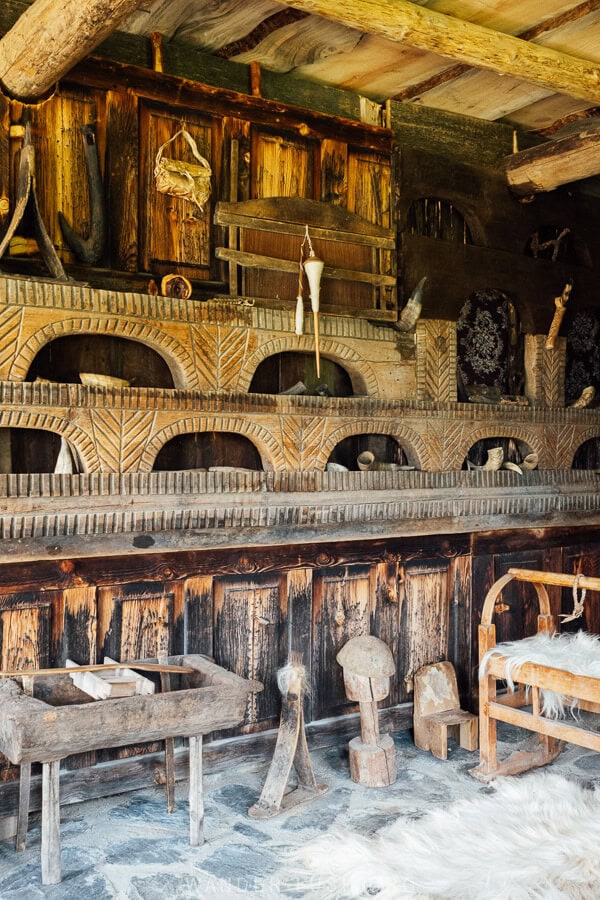
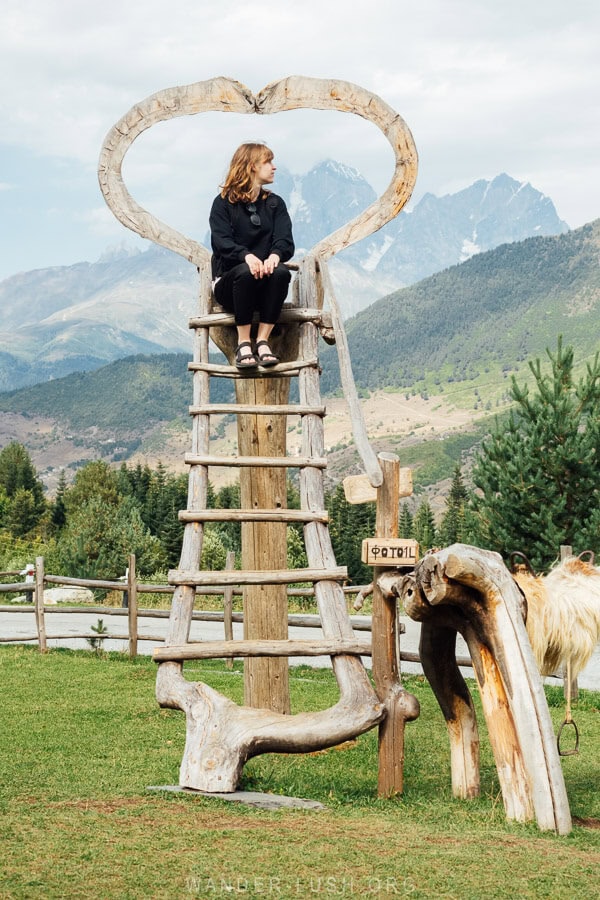
At 1,900 metres above sea level, the Ughviri Pass is the highest point on the journey. The pass itself is a let down – there is no church or shrine like you would expect in Georgia, only a bunch of telecommunication towers to interrupt the view.
At the pass, we noticed the beginning of a new concrete road to Tsvimri. The drive along the ridge is absolutely stunning – but unfortunately we found the last one-kilometre section of road was unfinished and closed, meaning we couldn’t get all the way in to visit the Church of Archangels. Instead, we turned around and stopped at a clearing, taking the path near this pine tree along the picketed farm fence to a lookout point over the valley.
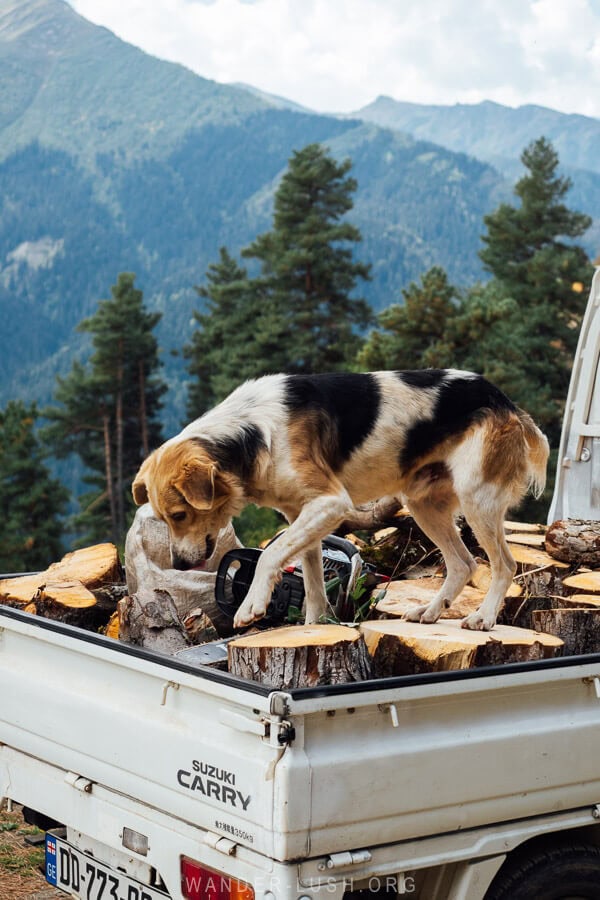
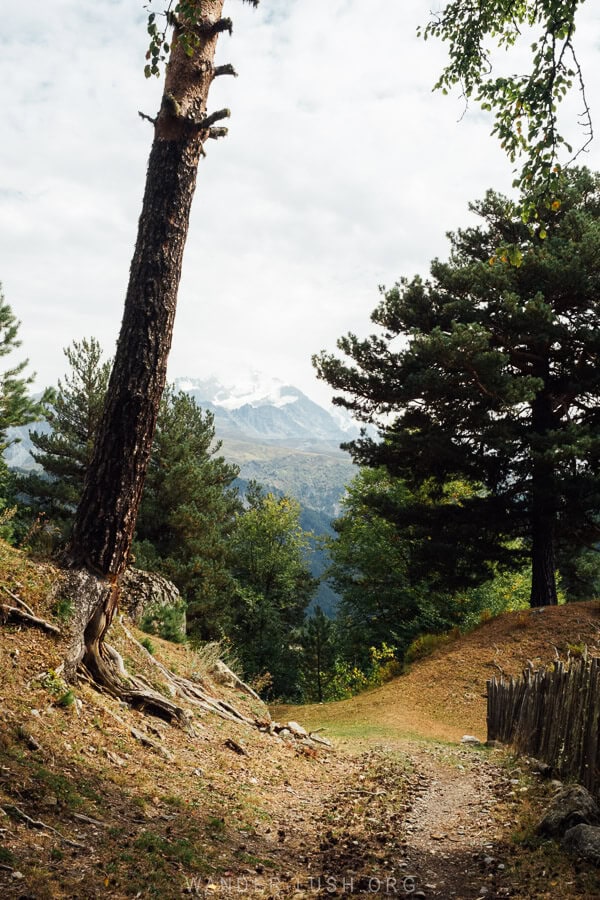
The Tower of Love is a popular place for local drivers to stop after zigzagging down the other side of the pass. We remembered it from our first trip and decided to drop in for old time’s sake – but believe me, this one is safe to skip. Entrance only costs 2 GEL, but this one does feel like a tourist trap. The stairs inside the tower are shaky, and there is no view from the top.
Down the road in Vichnashi, we paused at the ‘Stopover Cafe’ for a cold drink by the stream. We considered hiking to the Lagurka Church of Kala, but with no guarantee the doors would be unlocked, we cheated and sent the drone up instead! This whole area is very interesting, with once-grand two-storey stone houses along the road.
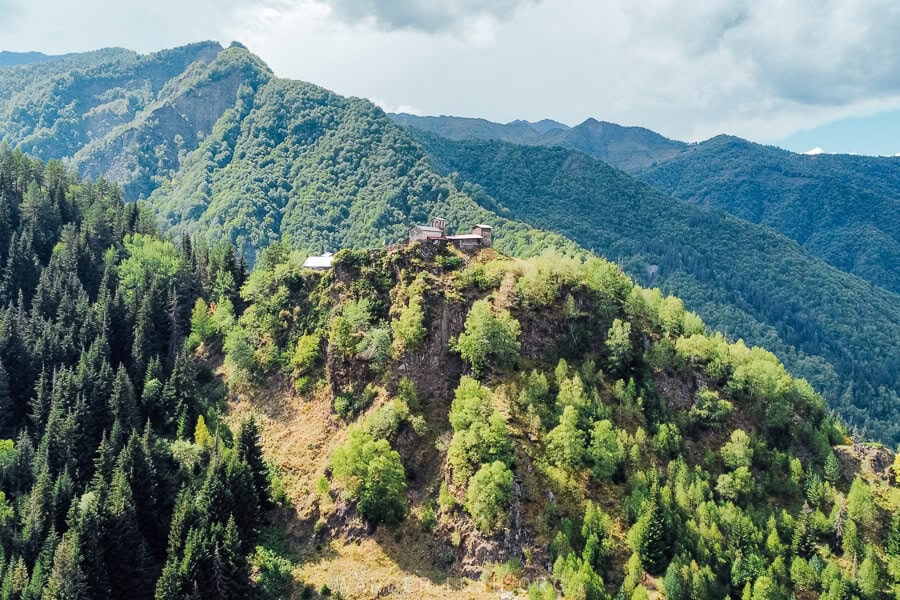
Afternoon in Ushguli
Ushguli is not a single village, but a community of five hamlets: Murkmeli, Chazhashi, Chvibiani, Zhibiani, and Lamjurishi. Day trippers are limited to the most well-trod villages – but if you have your own car and a full afternoon to explore, you can visit them all.
Inscribed as a UNESCO World Heritage Site in 1996, Upper Svaneti is one of the highest continuously inhabited villages in Georgia and Europe. (It is not the highest, though – that title goes to Bochorma in Tusheti.) The primary attraction here is the koshki towers. There are more than 200 surviving defensive dwellings in Chazhashi alone.
Arriving from Mestia, the first village you come to is Murkmeli. We drove in and had a good wander around, visiting the Matskhovari Church (with permission from the family whose backyard encircles it), and admiring the crumbling towers.
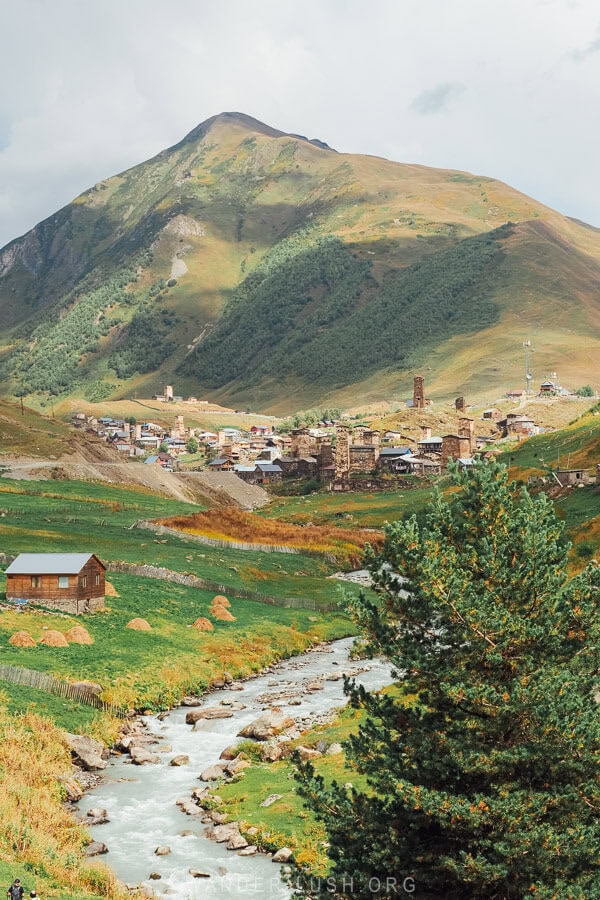
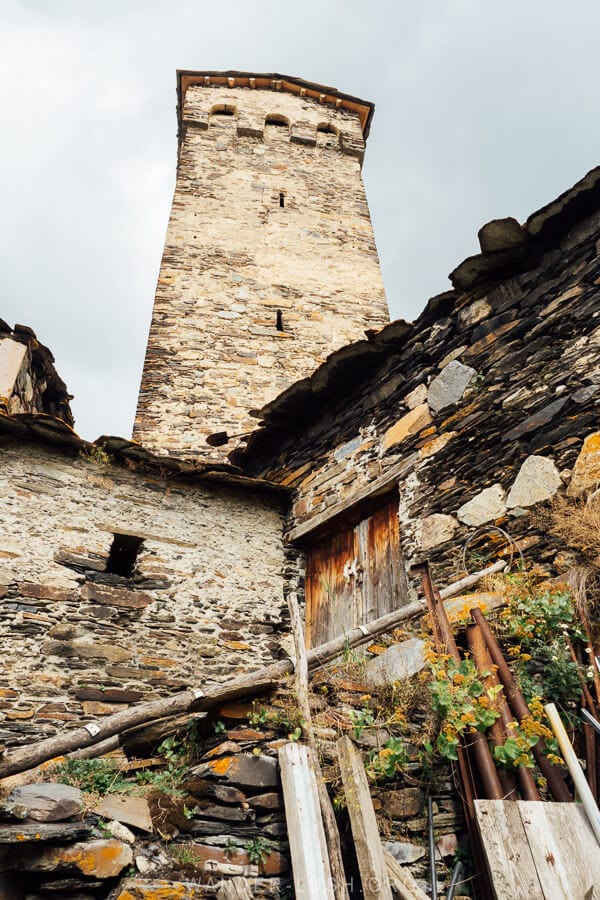
Chazhashi village has the highest concentration of towers. The streets here are all but impassable, so it’s best to park your car on the roadside and continue by foot, crossing the little pedestrian bridge over the river. There is a small ethnographic museum in Chazhashi, plus a tower or two that you can summit.
From the back of the Church of the Saviour, you can climb up to Queen Tamar Tower (incorrectly labelled as Queen Tamar Castle on Google Maps) for a terrific view of the two lower villages. At the time of our visit, Tamar Tower was roped off while the roof was being repaired.
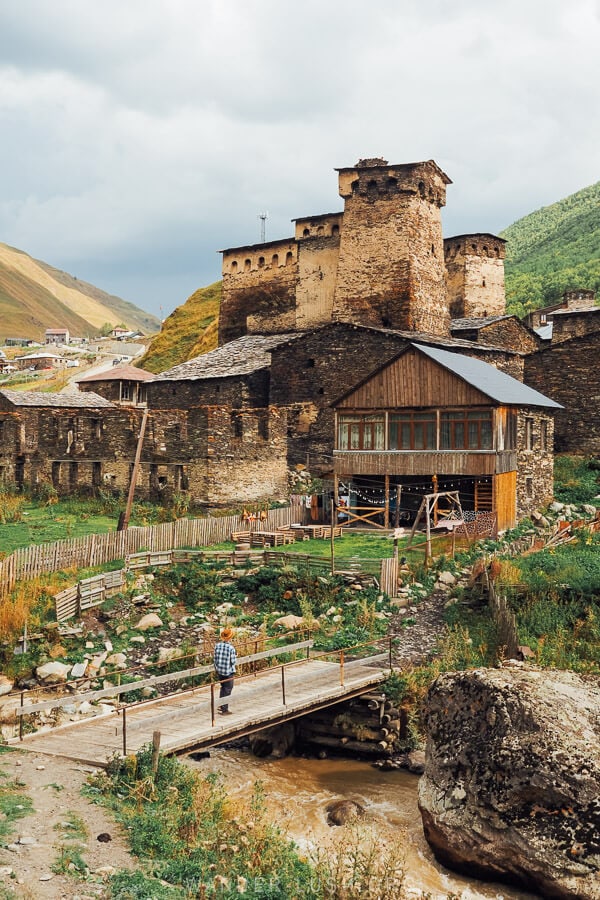
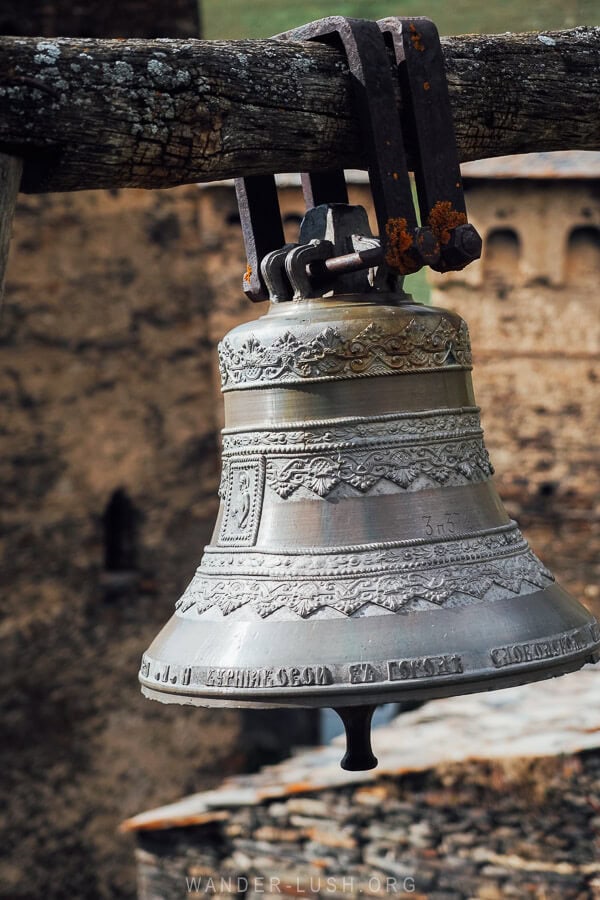
Chvibiani village sits on the riverside and is also very picturesque, with a combination of towers and timber houses. For a well-deserved lunch, I recommend Cafe Restaurant Murkvam, a family-run restaurant set in a historic home with beautiful wood carvings. We had the best kubdari (Svan meat pie) of our trip here, and a delicious dessert of housemade matsoni with berry jam. Parking is very hard to come by in Chvibiani, so I suggest you walk.
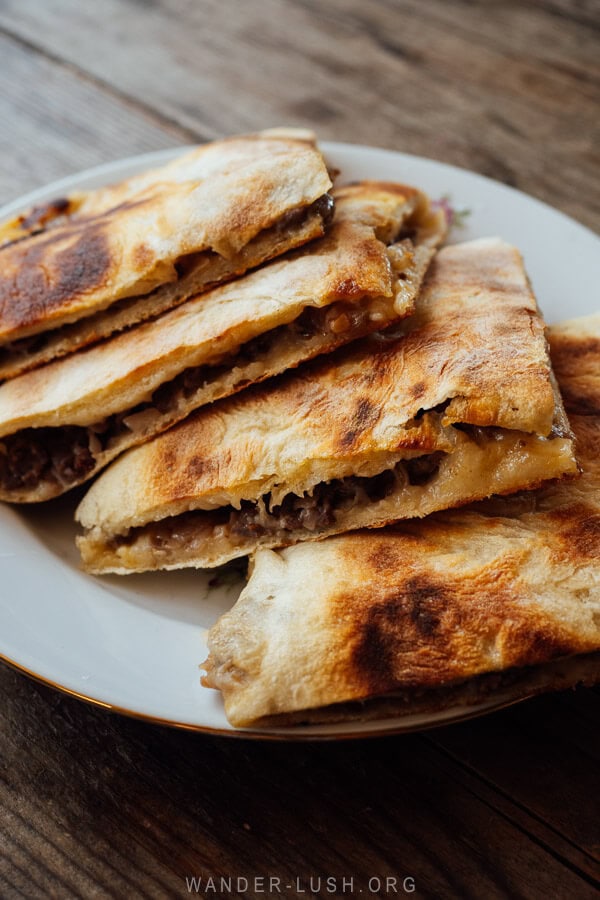

Continuing along the river to Zhibiani village, you will find the main Ushguli Ethnographic Museum. It is quite small and dark, but has some interesting wood carvings and a few signs in English. Entrance costs 10 GEL.
The 11th-century Lamaria Church was one of the highlights of Ushguli for me. On your way up, stop by the roadside in Lamjurishi village to photograph the church from afar. It might not look like it, but the mountain in the near distance that frames the church, Shchara, is the tallest peak in Georgia (5,193 metres).
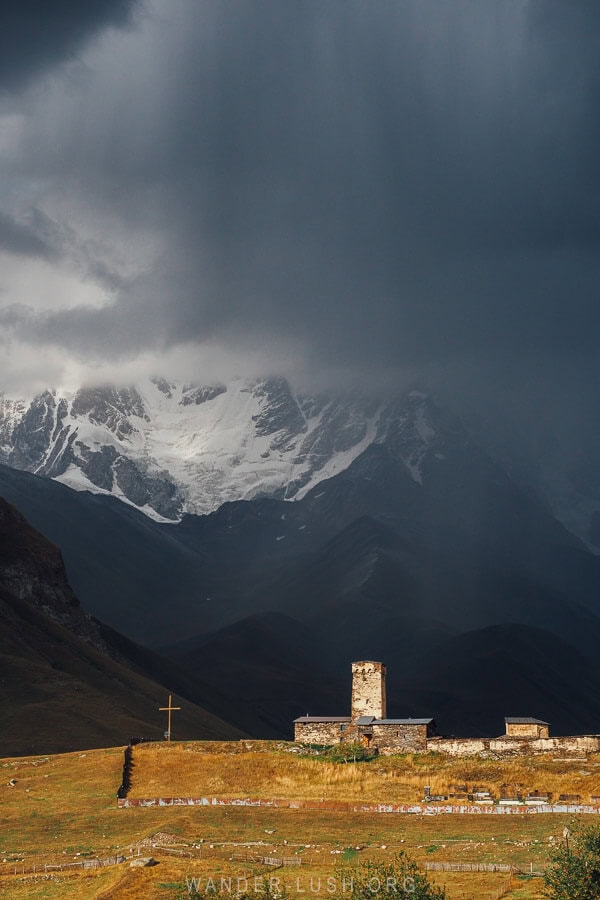

Just beyond the turnoff for the church, there is a dirt track that leads to a spectacular viewpoint over the Enguri Valley towards Shchara. We had no issues driving up to the little plateau, but there are some rocks at the top to watch out for.
After the sunset, pop back down to Cafe Shumeri for an easy dinner and a cup of warm Svan herbal tea.
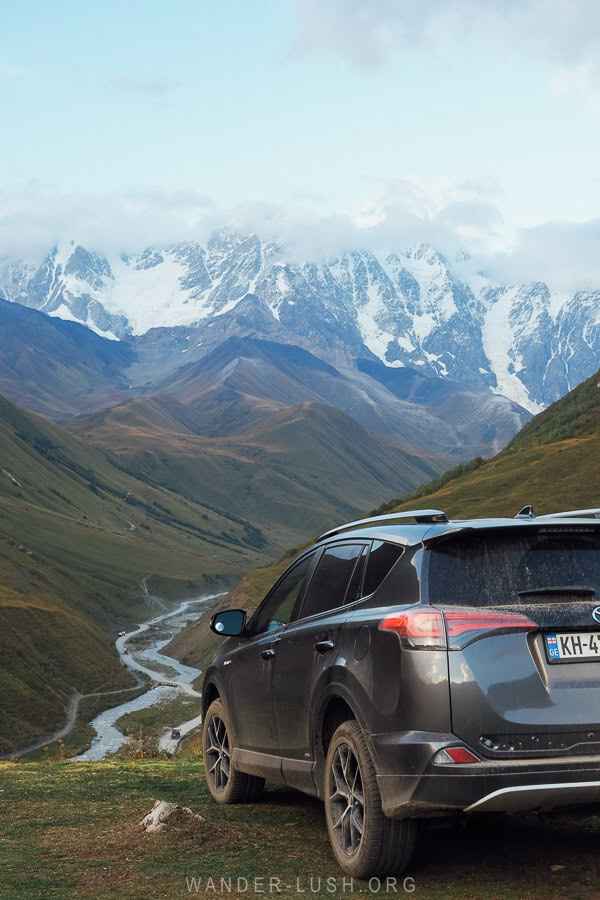
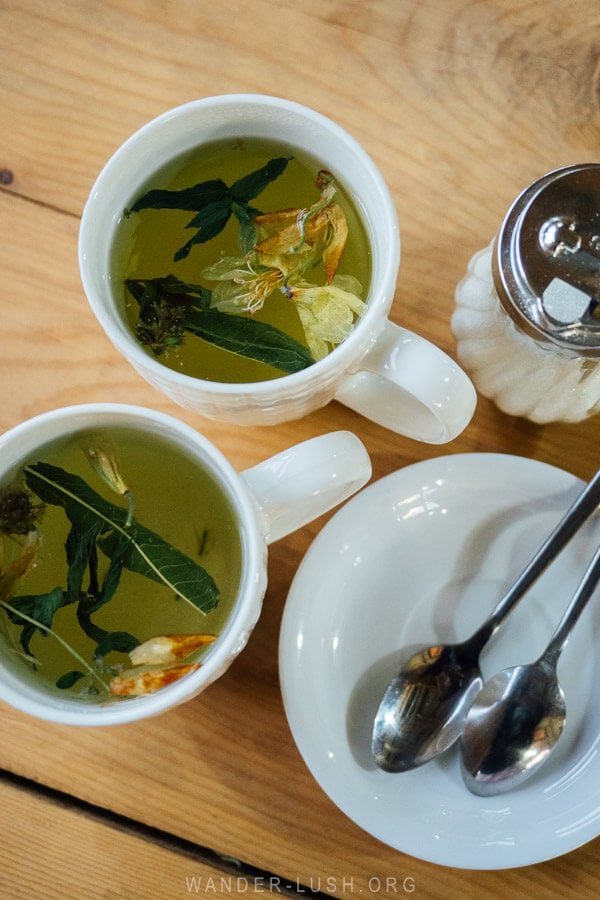
Where to stay in Ushguli
Accommodations in Ushguli are limited to guesthouses. Everything here is quite basic, and most homes don’t have heating, which can make for a chilly night. We chose Guesthouse Angelina in Zhibani and were very happy with our private room. It was warm and clean, and the view of the church from our bedroom window was absolutely priceless. Onsite parking is available in the family garden.
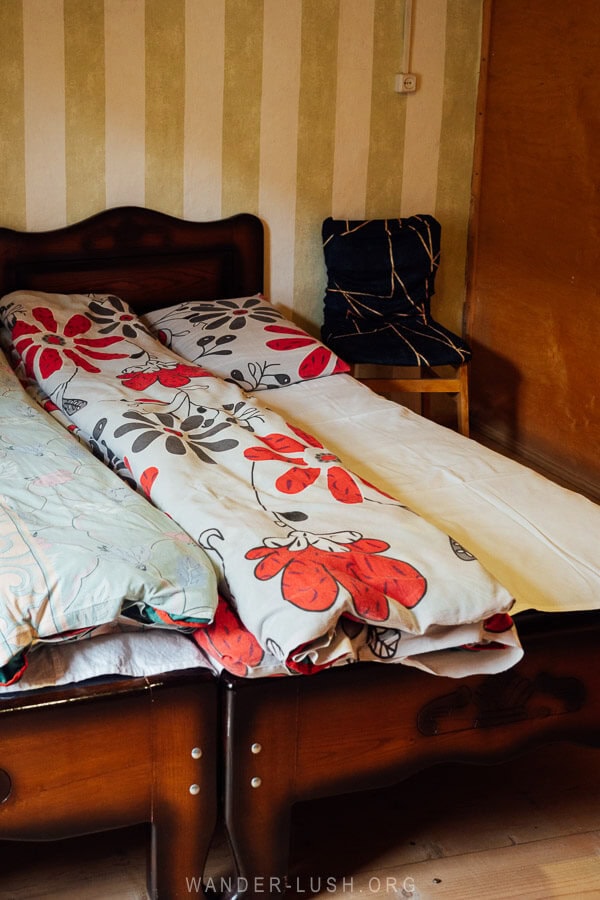
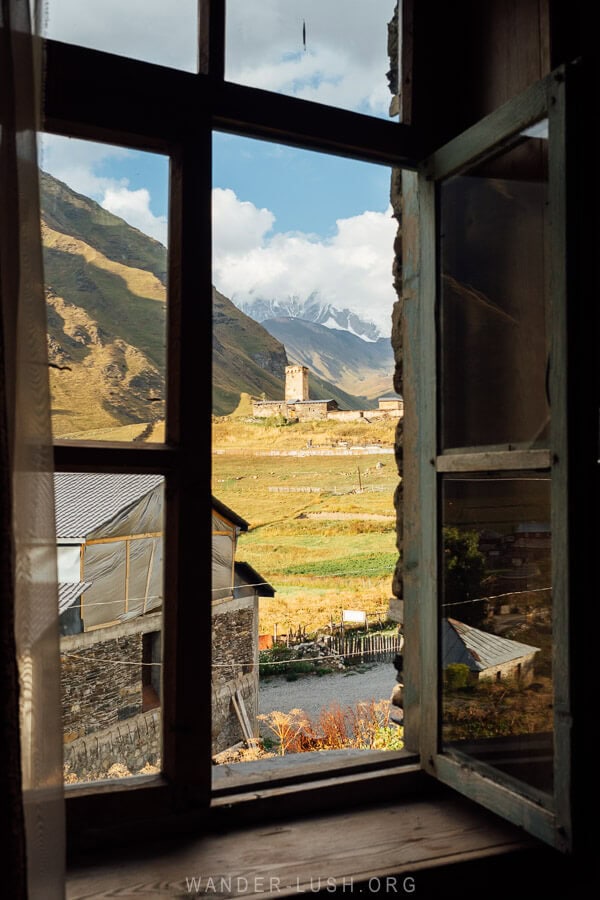
Nizharadze’s Tower is a fine alternative with plenty of good reviews, or for something more up-market, Ushguli Highland Cottage is a newly furnished cabin.
Day 6: Ushguli to Sasashi (Lower Svaneti)
Start your final day in Upper Svaneti with a short hike before leaving via the newly sealed road and spectacular Zagari Pass back towards the lowlands. The total travel time from Ushguli to Kutaisi is 4 hours, so if you want to cut your itinerary short, you could return directly to Kutaisi. We chose to explore a bit of Lower Svaneti and break-up the drive with a night in Sasashi village 1.5 hours from Ushguli.
We woke to a crystal clear blue-sky Ushguli day – a complete contrast to the stormy night before – and decided to return to the viewpoint near our guesthouse to watch the sunrise on Shchara.
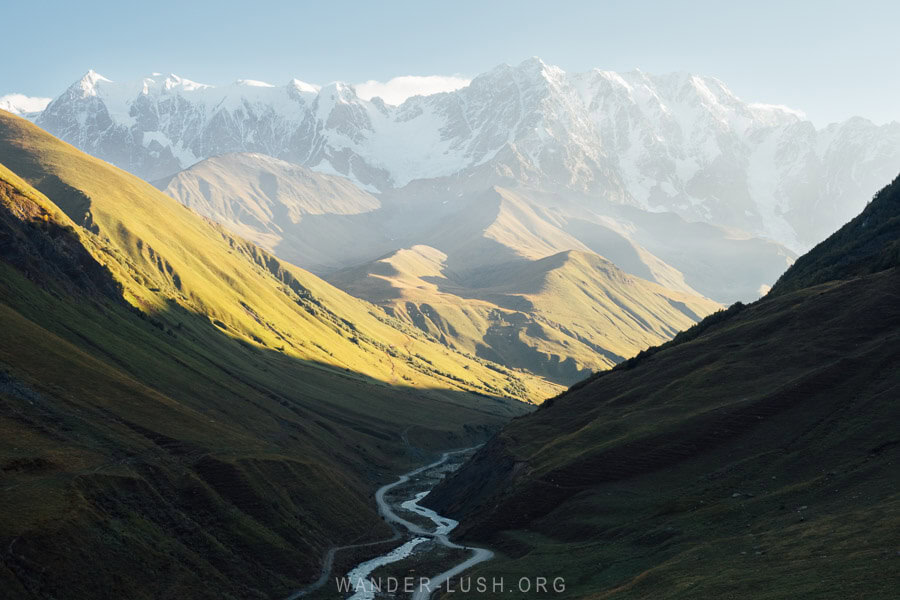
Queen Tamar’s Fortress
Because Queen Tamar Tower faces west, the light is better in the morning. We returned here to photograph the tops of the Chazhashi towers (and fly our drone) before hiking to the real Queen Tamar’s Fortress above the village.
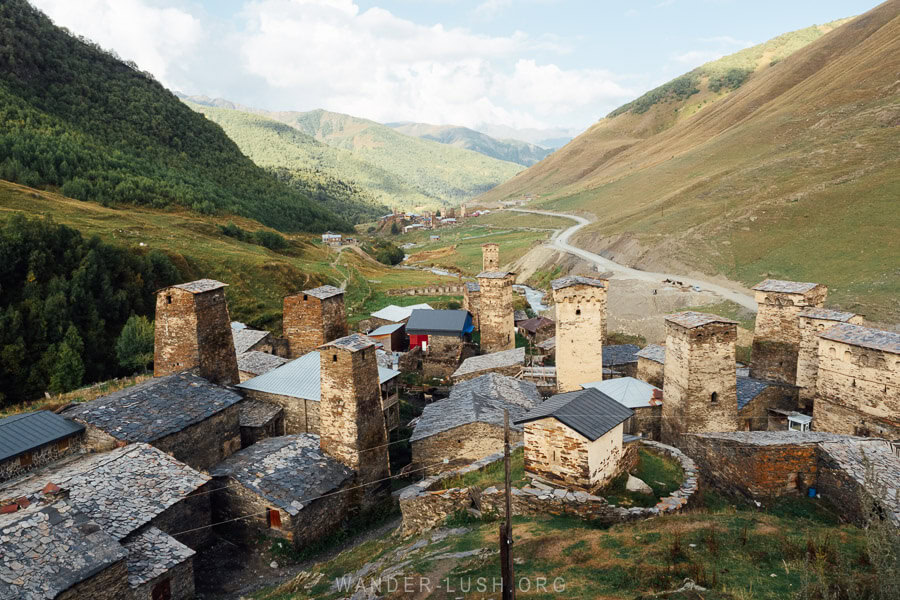
This walk is a nice option if you want to fit in a short hike but aren’t interested in going all the way to Shkhara Glacier or Romisghele Lake. The glacier hike was on our wishlist, but at the time of our visit there was a constant stream of cement trucks on the road, which would have made it very unpleasant.
To start the hike to the fortress, walk through Chazhashi and cross the little footbridge over the river to the clearing on the opposite side. The trail is unmarked and difficult to follow in places, so I plotted it myself on WikiLoc. You can access it here. It only takes 40 minutes to reach the castle ruins, but the path tracks a dry-ish river bed and is extremely steep, uneven and slippery. The ruins themselves are very photogenic, and there is a nice panorama from the top.
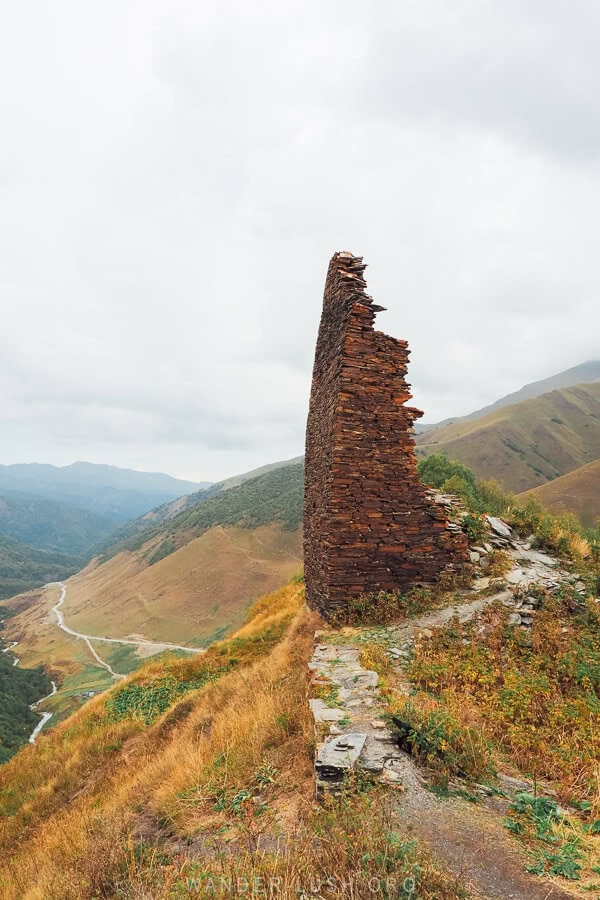
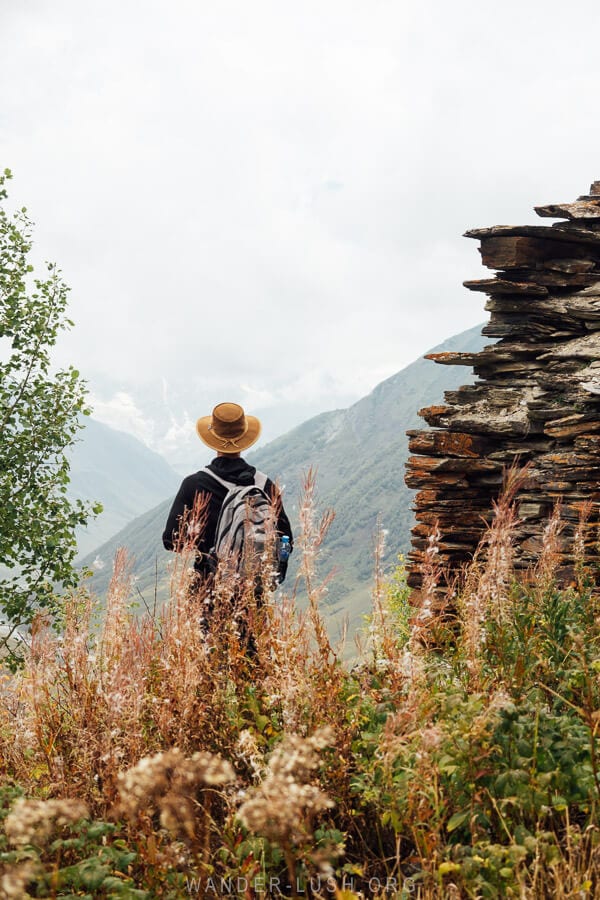
After completing the hike, we returned to Chvibiani for an excellent lunch at Cafe Svaneti. The garlicky meat soup is precisely what you need after a hike, and the shoti bread is made fresh to order on a little stove.
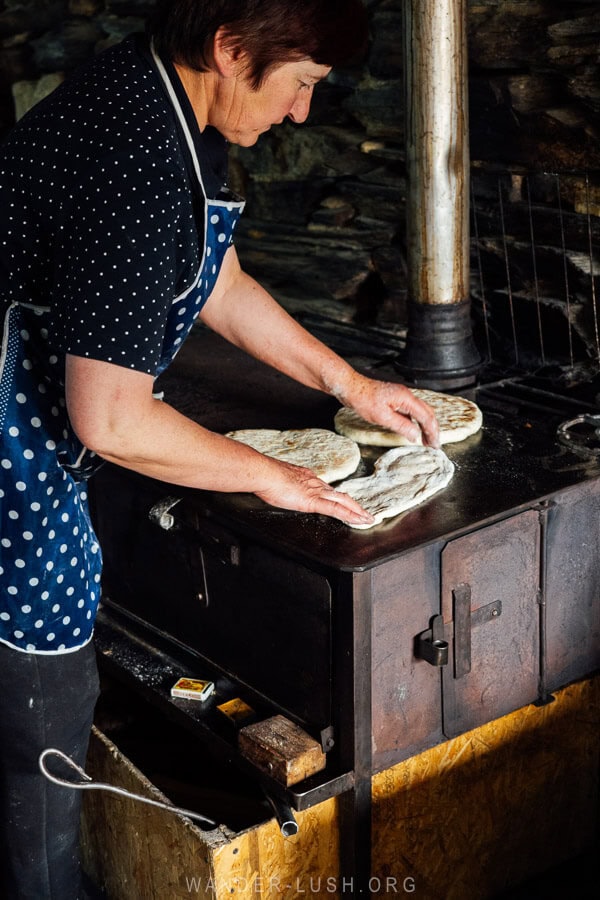
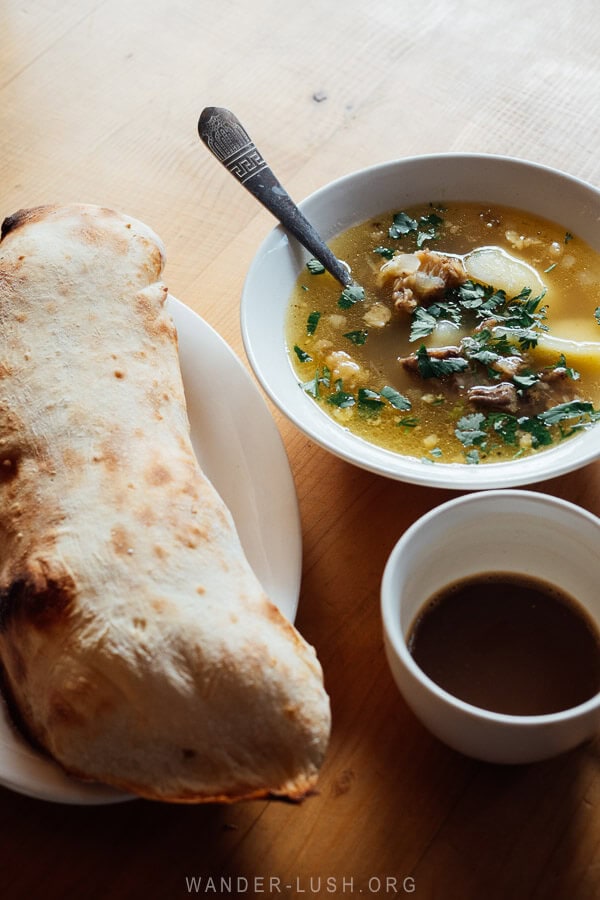
The Zagari Pass
The new road from Ushguli to Lentekhi is one of the most spectacular mountain passes in Georgia. The scenery is incredible throughout – from the high mountains near Ushguli to the narrow, winding roads sheltered by towering rock walls on the other side of the pass. The high point of the drive comes right after the Zagari Pass as you descend into Koruldashi via a set of switchbacks. There are not many designated viewpoints, but in most places the road is wide enough that you can safely pull to the side for a photo.
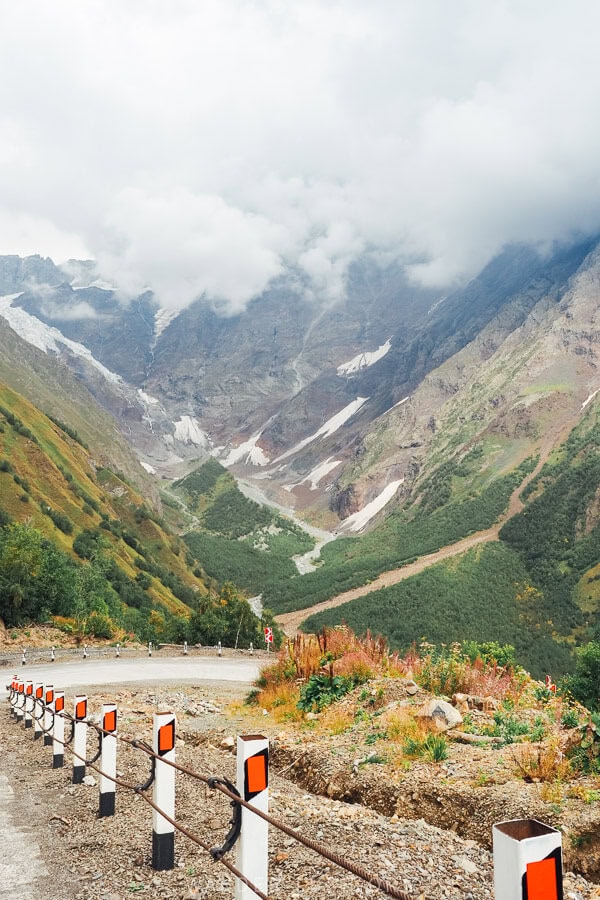
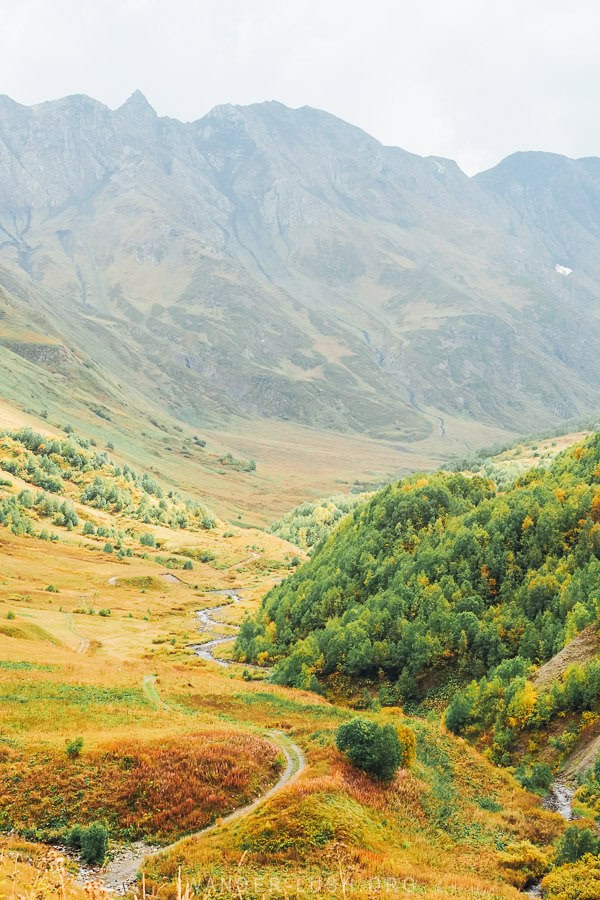
Evening in Sasashi
We reached Sasashi 90 minutes after leaving Ushguli, giving us enough time to explore the surreal Muashi Resort. Famous for its underground mineral water springs, Muashi was a popular summer retreat in the Soviet period. Most of the cabins and buildings in the complex are abandoned and ruined – including this very cool structure where health treatments once took place. The resort is now privately owned, but visitors are welcome to look around and fill up their bottles at the spring.
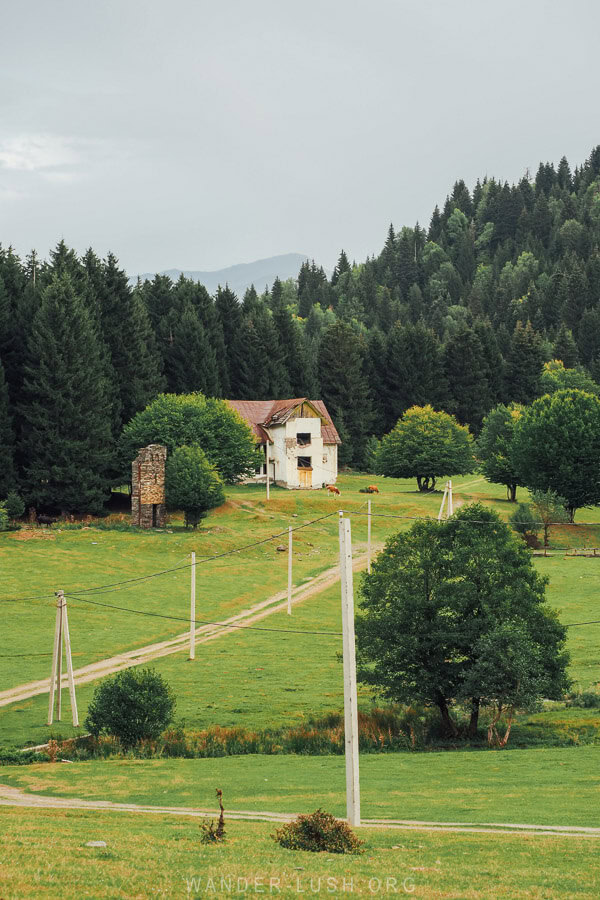
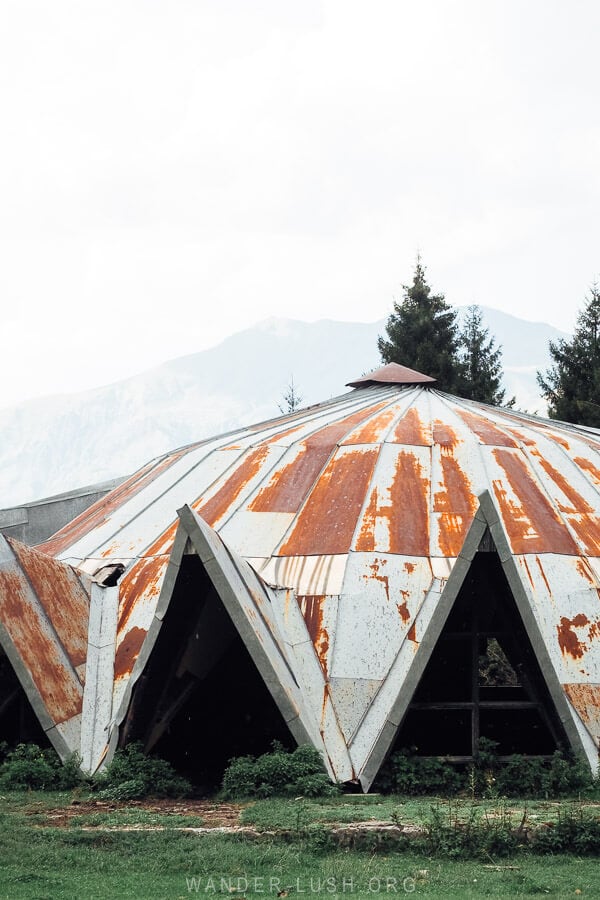
Where to stay in Sasashi
One of my main motivations for visiting Sasashi was to stay at JorJ’Inn. Our host, Tamta, worked with her brother and sister-in-law to rehabilitate their great-grandfather’s home. They have done an incredible job – if I ever get a chance to do a project like this, I think I would make all the same design choices!
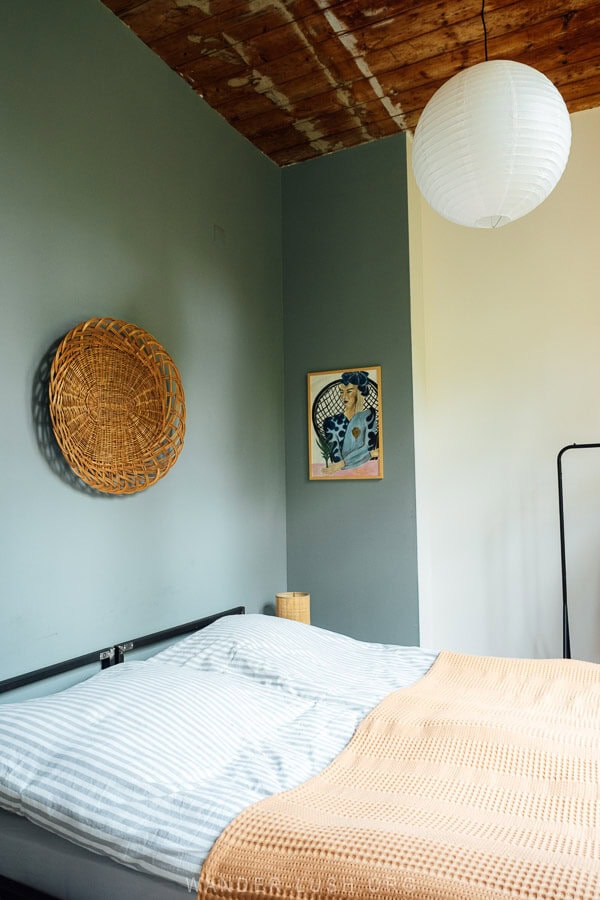
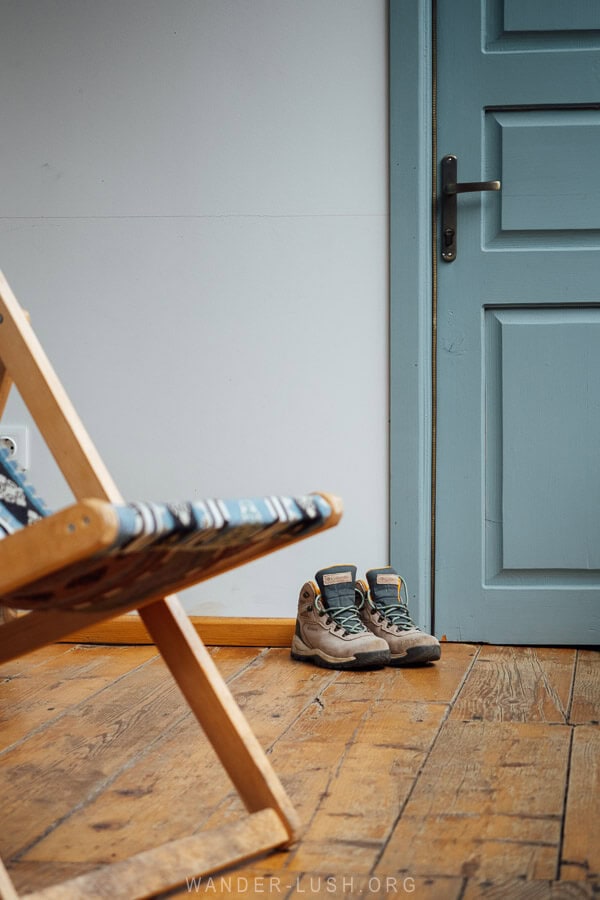
Tamta prepared an incredible dinner for us, which included kubdari and fresh sulguni courtesy of the neighbours.
Day 7: Sasashi to Kutaisi via Lentekhi
Where to stop on the road from Sasashi to Kutaisi
The stretch of road between Sasahi and Kutaisi via Lentekhi was rehabilitated several years ago. Aside from a few landslip sections that are now being repaired, it is smooth and very pleasant to drive.
On the way back to Kutaisi, we made a brief stop in Lentekhi for breakfast at Svanian Kubdari, a little roadside bakery-cafeteria with outdoor seating on the river. The adapted baton-shaped kubdari is the perfect size to share between two people. Right outside the bakery, there is an interesting sword-shaped monument decorated with Soviet-style friezes. I really liked the vibe in Lentekhi and will be returning to see more of the town soon.
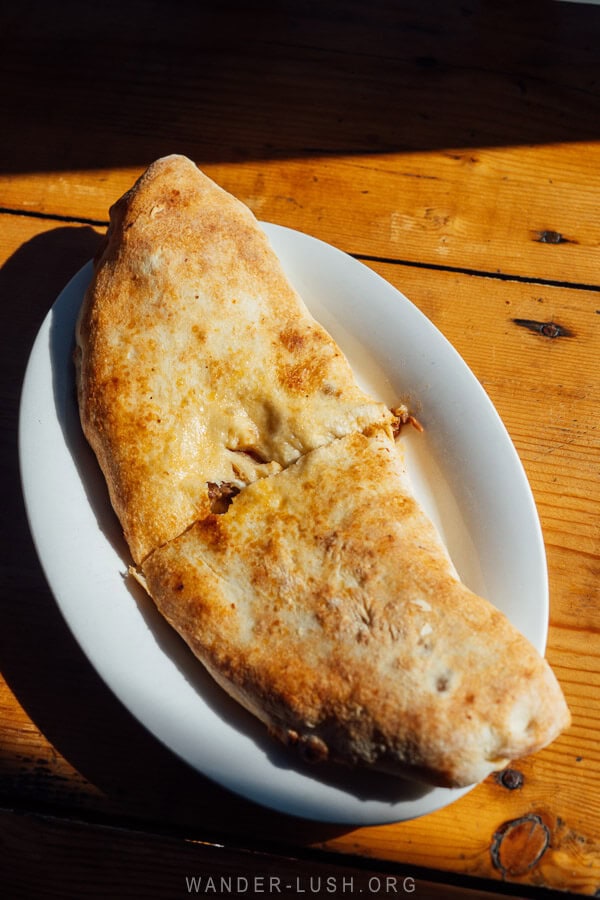
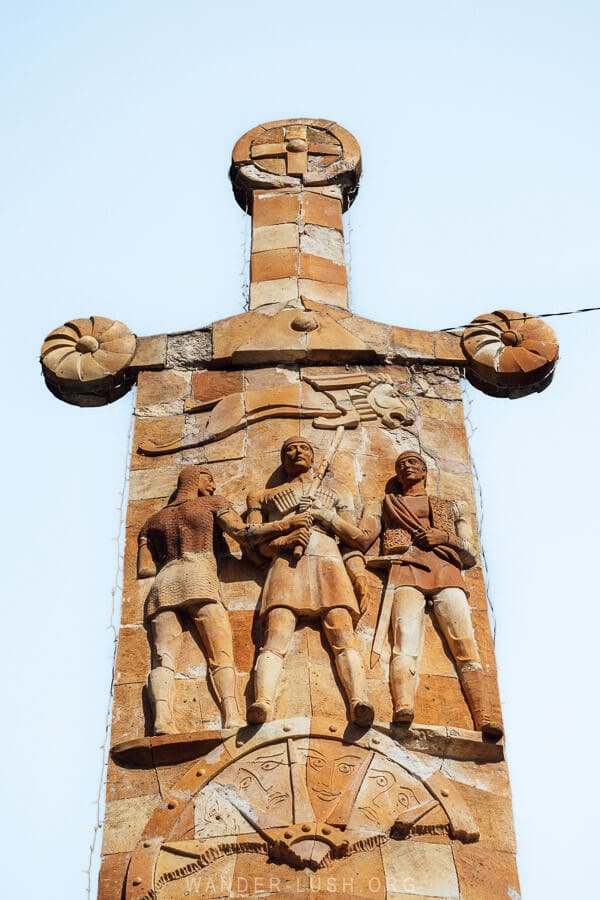
We were keen to get home to Kutaisi, so we drove the rest of the way without any stops. If you have the day free, there are a range of other places to see on the way down, including Tsageri (for the local museum and Gveso Castle). My top recommendation would be to make a detour into Lechkhumi for the Khvamli Mountain hike. Learn more about one of my favourite day hikes in Georgia here in my detailed guide.
Prometheus Cave and the Soviet spa town of Tskaltubo are also right on your route to Kutaisi. If you want to continue your travels in another mountain region rather than heading back to the city, take a right when you reach the main highway before Tsageri and follow the road all the way into Racha via Lailashi and Upper Lechkhumi.
